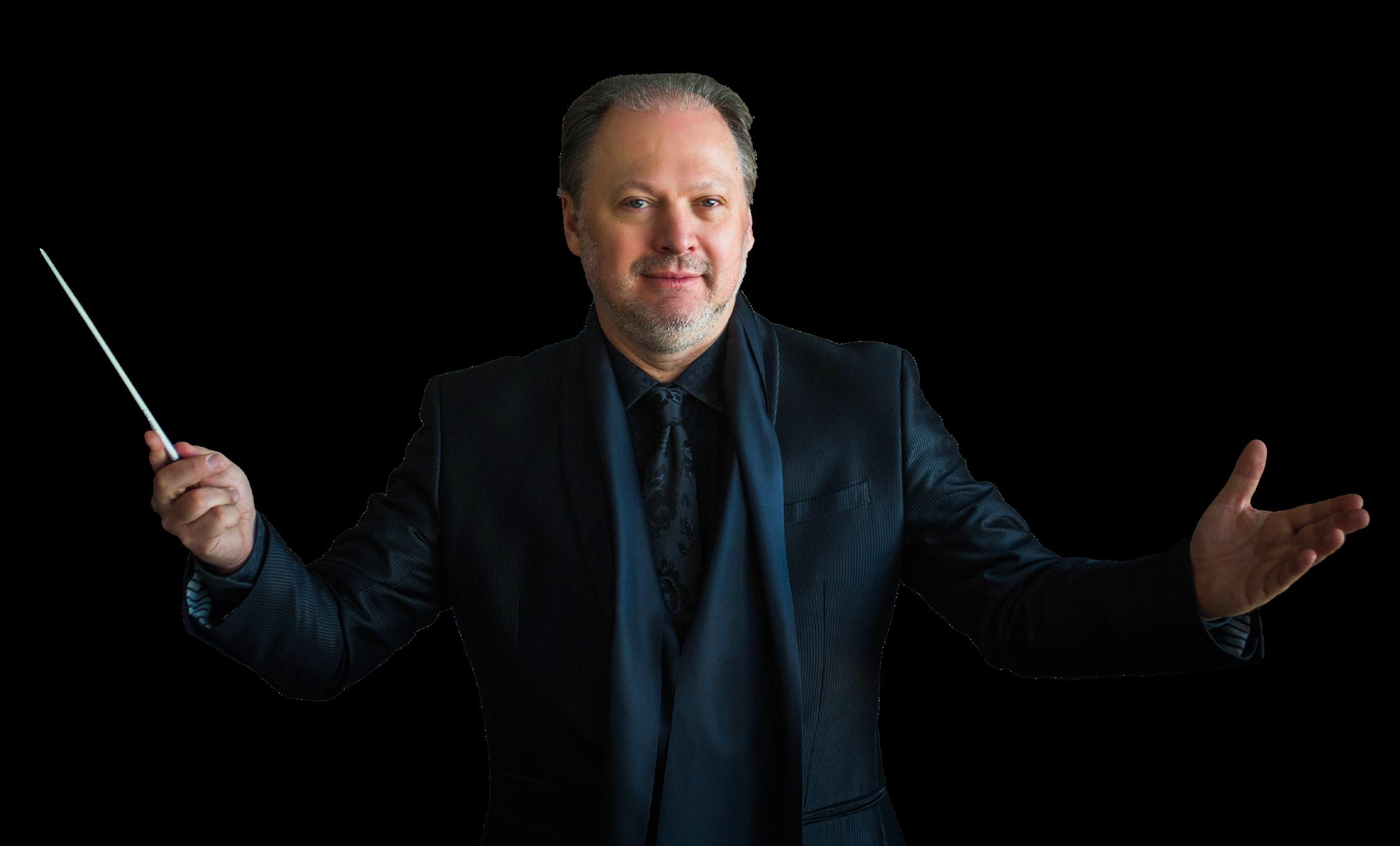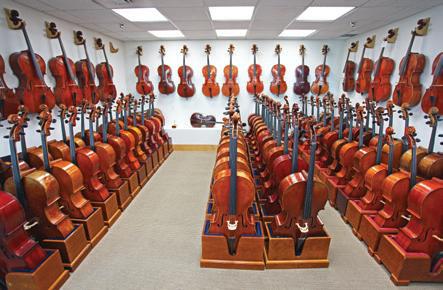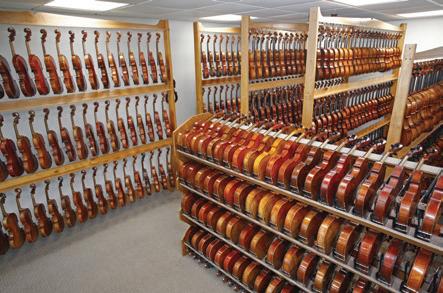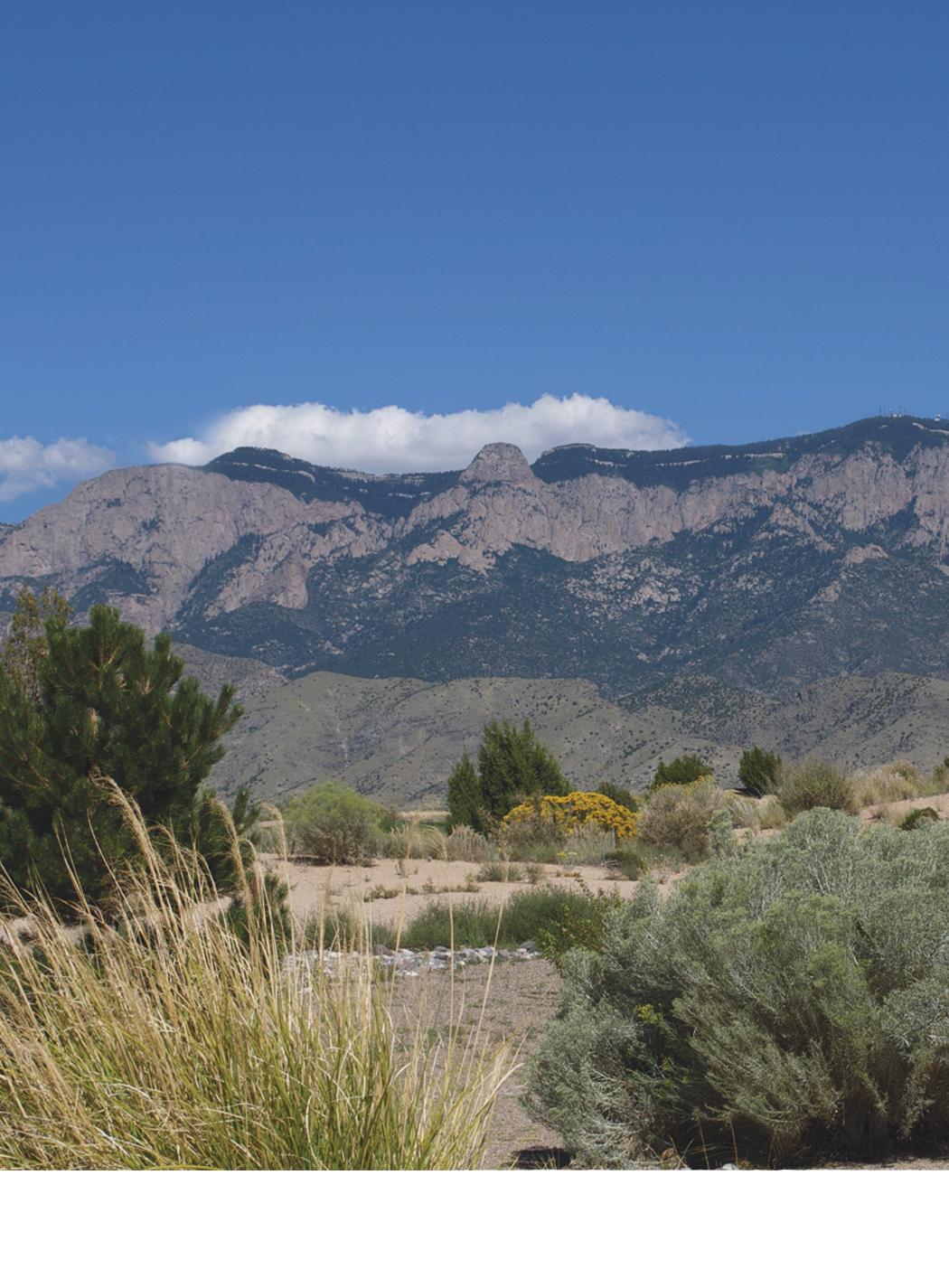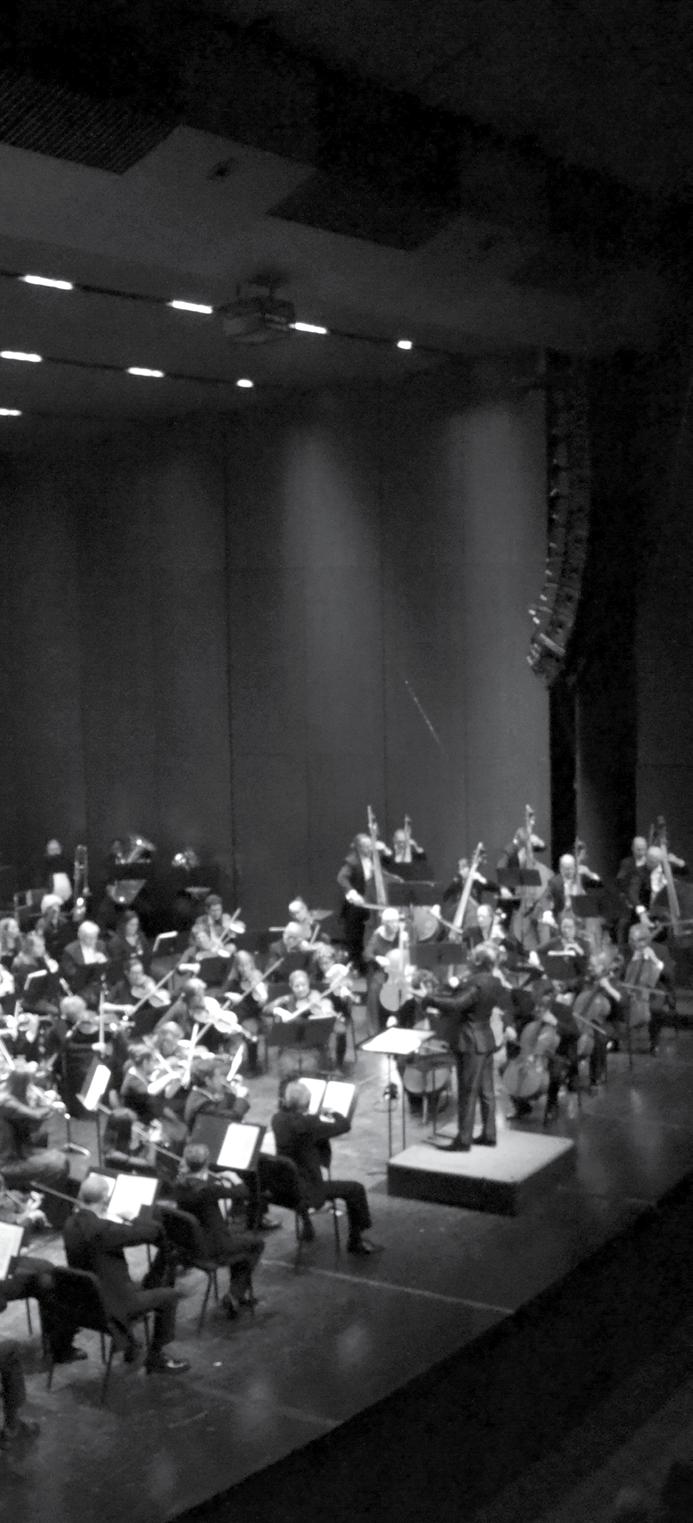Ioniță Plays Dvořák
Saturday, March 18, 2023, 6 p.m.
5:00 p.m. Pre-Concert Talk
Roberto Minczuk Music Director
Andrei Ioniță cello
Cello Concerto in b minor, Op. 104, B. 191
Antonín Dvořák
I. Allegro (1841–1904)
II. Adagio, ma non troppo
III. Finale: Allegro moderato—Andante—Allegro vivo
Andrei Ioniță cello
INTERMISSION
Daphnis et Chloé Suite Nos. 1 and 2
Maurice Ravel
I. Nocturne (1875–1937)
II. Interlude
III. Danse guerrière
IV. Lever du jour
V. Pantomime
VI. Danse générale
Popejoy Hall
MAKING A DIFFERENCE
This performance is made possible by:
Thomas Martin & Cynthia Phillips
PRE-CONCERT TALK
Sponsored by: Menicucci Insurance Agency
Hosted by KHFM’s Alexis Corbin
POPEJOY
CLASSICS
MAR 18
The New Mexico Philharmonic nmphil.org 9 CONCERT PROGRAM
In 2017, GRAMMY® Award-winning conductor Roberto Minczuk was appointed Music Director of the New Mexico Philharmonic and of the Theatro Municipal Orchestra of São Paulo. He is also Music Director Laureate of the Calgary Philharmonic Orchestra (Canada) and Conductor Emeritus of the Orquestra Sinfônica Brasileira (Rio de Janeiro). In Calgary, he recently completed a 10-year tenure as Music Director, becoming the longest-running Music Director in the orchestra’s history.
Highlights of Minczuk’s recent seasons include the complete Mahler Symphony Cycle with the Calgary Philharmonic Orchestra; Bach’s St. John Passion, Bruckner’s Symphony No. 7, Beethoven’s Fidelio, Berlioz’s The Damnation of Faust, Mozart’s The Magic Flute, Verdi’s La traviata, Bernstein’s Mass, and Strauss’s Der Rosenkavalier with the Theatro Municipal Orchestra of São Paulo; debuts with the Cincinnati Opera (Mozart’s Don Giovanni), the Tokyo Metropolitan Symphony Orchestra, and Daejeon Philharmonic in South Korea; and return engagements with the Orchestra National de Lille and the New York City Ballet. In the 2016/2017 season, he made return visits to the Israel Symphony Orchestra, as well as the Teatro Colón Philharmonic and Orchestra Estable of Buenos Aires.
A protégé and close colleague of the late Kurt Masur, Minczuk debuted with the New York Philharmonic in 1998, and by 2002 was Associate Conductor, having
worked closely with both Kurt Masur and Lorin Maazel. He has since conducted more than 100 orchestras worldwide, including the New York, Los Angeles, Israel, London, Tokyo, Oslo, and Helsinki Philharmonic Orchestras; the London, San Francisco, Dallas, and Atlanta Symphony Orchestras; and the National Radio (France), Philadelphia, and Cleveland Orchestras, among many others. In March 2006, he led the London Philharmonic Orchestra’s U.S. tour, winning accolades for his leadership of the orchestra in New York, Los Angeles, and San Francisco.
Until 2010, Minczuk held the post of Music Director and Artistic Director of the Opera and Orchestra of the Theatro Municipal Rio de Janeiro, and, until 2005, he served as Principal Guest Conductor of the São Paulo State Symphony Orchestra, where he previously held the position of Co-Artistic Director. Other previous posts include Artistic Director and Principal Conductor of the Ribeirão Preto Symphony, Principal Conductor of the Brasília University Symphony, and a six-year tenure as Artistic Director of the Campos do Jordão International Winter Festival.
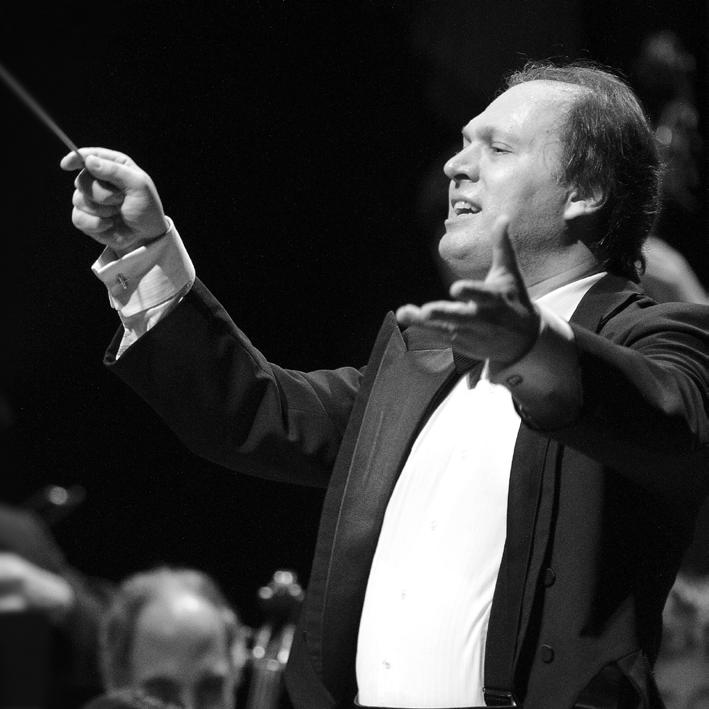
Minczuk’s recording of the complete Bachianas Brasileiras of Hector VillaLobos with the São Paulo State Symphony Orchestra (BIS label) won the Gramophone Award of Excellence in 2012 for best recording of this repertoire. His other recordings include Danzas Brasileiras, which features rare works by Brazilian composers of the 20th century, and the Complete Symphonic Works of Antonio Carlos Jobim, which won a Latin GRAMMY in 2004 and was nominated for an American GRAMMY in 2006. His three recordings with the Calgary Philharmonic Orchestra include Rhapsody in Blue: The Best of George Gershwin and Beethoven Symphonies 1, 3, 5, and 8. Other recordings include works by Ravel, Piazzolla, Martin, and Tomasi with the London Philharmonic (released by Naxos), and four recordings with the Academic Orchestra of the Campos do Jordão International Winter Festival, including works by Dvořák, Mussorgsky, and Tchaikovsky. Other projects include a 2010 DVD recording with the Chamber
Orchestra of Philadelphia, featuring the premiere of Hope: An Oratorio, composed by Jonathan Leshnoff; a 2011 recording with the Odense Symphony of Poul Ruders’s Symphony No. 5, which was featured as a Gramophone Choice in March 2012; and a recording of Tchaikovsky’s Italian Capriccio with the BBC National Orchestra of Wales, which accompanied the June 2010 edition of BBC Music Magazine. The Academic Orchestra of the Campos do Jordão Festival was the Carlos Gomes prizewinner for its recording from the 2005 Festival, which also garnered the TIM Award for best classical album.
Roberto Minczuk has received numerous awards, including a 2004 Emmy for the program New York City Ballet—Lincoln Center Celebrates Balanchine 100; a 2001 Martin E. Segal Award that recognizes Lincoln Center’s most promising young artists; and several honors in his native country of Brazil, including two best conductor awards from the São Paulo Association of Art Critics and the coveted title of Cultural Personality of the Year. In 2009, he was awarded the Medal Pedro Ernesto, the highest commendation of the City of Rio de Janeiro, and in 2010, he received the Order of the Ipiranga State Government of São Paulo. In 2017, Minczuk received the Medal of Commander of Arts and Culture from the Brazilian government.
A child prodigy, Minczuk was a professional musician by the age of 13. He was admitted into the prestigious Juilliard School at 14 and by the age of 16, he had joined the Orchestra Municipal de São Paulo as solo horn. During his Juilliard years, he appeared as soloist with the New York Youth Symphony at Carnegie Hall and the New York Philharmonic Young People’s Concerts series. Upon his graduation in 1987, he became a member of the Leipzig Gewandhaus Orchestra at the invitation of Kurt Masur. Returning to Brazil in 1989, he studied conducting with Eleazar de Carvalho and John Neschling. He won several awards as a young horn player, including the Mill Santista Youth Award in 1991 and I Eldorado Music. ●
Roberto Minczuk Music Director
2022/23 Season / Volume 11 / No. 5 10 ARTISTS
Daniel Kaler
Praised by critics and listeners alike for his “warm and luminous tone” (Chicago Music Report), Daniel Kaler is recognized by many as a rising star of his generation.
Following his initial studies under Gilda Barston of the Music Institute of Chicago, Kaler continued his studies under Professor Hans Jørgen Jensen of the Northwestern University Bienen School of Music and Professor Stephen Balderston of the DePaul University School of Music. Kaler received his Bachelor of Music in cello performance from the Cleveland Institute of Music in 2019, having studied with Mark Kosower. He currently studies with Brinton Smith at Rice University’s Shepherd School of Music.
Kaler has many awards to his credit, including being a prizewinner of the Sigma Alpha Iota Concerto Competition at the Chautauqua Festival (Chautauqua, New York); the Cleveland Institute of Music Concerto Competition, where he was also awarded the 2018 Payne Fund Prize; the North International Music Competition (London, UK); the Muse International Music Competition; and most recently, the Shepherd School of Music Concerto Competition. His solo engagements for the 2021/22 season included a performance of Ernest Bloch’s Schelomo with the Shepherd School of Music Symphony Orchestra and a recital at Rice University’s Shepherd School of Music.
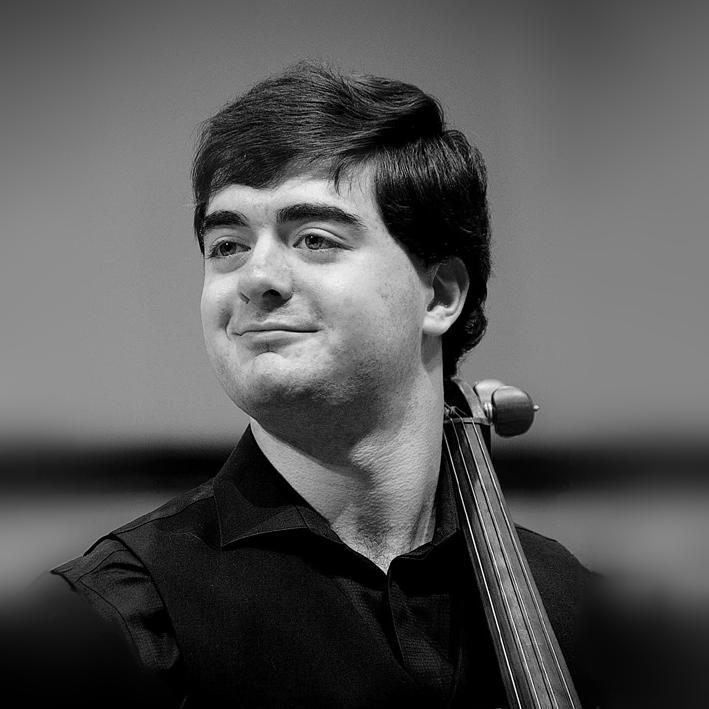
In recent years, Kaler appeared as a soloist with the Ars Viva Orchestra, Kankakee Valley Symphony
Orchestra, West Virginia Symphony Orchestra, Bogotá Philharmonic Orchestra, Chautauqua Music School Festival Orchestra, Cleveland Institute of Music Orchestra, and the Asheville Symphony Orchestra.
Kaler has attended and given performances at solo, chamber, and orchestral music programs, including the Chautauqua Music Festival (Chautauqua, New York), Sarasota Music Festival (Sarasota, Florida), Heifetz International Music Institute (Staunton, Virginia), Bowdoin International Music Festival (Brunswick, Maine), and the North Shore Chamber Music Festival (Northbrook, Illinois). He has appeared on WFMT’s “Introductions,” WCPN’s “Applause Performances,” and WCLV. ●
remained open to letting the place define the music he made. It was this openness to the local landscape that defined what was to become his musical style—a mix of Spanish, Mexican, and World elements, strong melodies tinged with a shade of melancholy, balanced with upbeat rhythms.
Liebert founded the first incarnation of his band, Luna Negra, in 1989. His debut album began as a self-produced release called Marita: Shadows and Storms, copies of which local Native American artist Frank Howell distributed in his art galleries. After the record made its way to radio stations, it began generating a buzz among programmers and received an unprecedented response among listeners. Higher Octave Music picked it up and released a fully remastered version, Nouveau Flamenco. Recorded for less than $3,000 on an old analog machine in a shack beside a gravel pit, this CD became an international sensation, establishing Liebert’s unique border-style flamenco, and becoming the best-selling instrumental acoustic guitar album of all time.
Ottmar Liebert guitar
Ottmar Liebert’s global success can be attributed to a myriad of things—his creative vision, his determination, and a strong sense of melody. Born in Cologne, Germany, he began playing guitar at age 11. Until the age of 19, Liebert had intended to stay in Germany and pursue a career as a designer and photographer. However, while journeying extensively through Asia and playing with other travelers and local musicians, he realized that he could not escape a life of music. After pursuing his dreams of playing rock music in Boston, he settled in Santa Fe, New Mexico. Santa Fe was a fresh start for Liebert in many ways and in addition to returning to the acoustic guitar, he

Visual art has always been essential to Ottmar Liebert’s worldview, and even today, he is an avid photographer. “My music is visual,” Liebert says. “Santa Fe has great light, that special thing you get in the high desert. Some days you can see for 100 miles and think you can reach into the sky or walk off a ridge and keep flying. That’s how I felt when I recorded Nouveau Flamenco.”
Liebert has since become one of the most successful instrumental artists of the past decades, entertaining audiences around the world and releasing a catalog of 33 classic albums including live recordings, an orchestral album for Sony Classical, a binaural surround-sound recording, remix albums, a lullaby, and a flamenco-reggae album. During his career, he has played more than 2,000 concerts worldwide. Ottmar Liebert and Luna Negra have played two concerts with the New Mexico Philharmonic featuring Liebert’s music arranged by bassist Jon Gagan. These two concerts, to date, have broken attendance records for the New Mexico
cello
continued on 12 The New Mexico Philharmonic nmphil.org 11 ARTISTS
continued
Philharmonic. Ottmar Liebert has been nominated for five GRAMMY awards. ●
orchestras, among them the Munich and Dresden Philharmonics, the German Symphony Orchestra, the Orchestre National de Belgique, and the Czech Philharmonic Orchestra, as well as his appointment to Artist-in-Residence with the Hamburg Symphonic Orchestra in the 2019/2020 season.
His musicianship has led him on tours throughout the U.S., where he has performed with the National Youth Orchestra of Romania and the Detroit, San Diego, and Grand Rapids Symphony Orchestras. Over the span of his career, he has worked with famous conductors such as Cristian Macelaru, Sylvain Cambreling, Kent Nagano, Omer Meir Wellber, John Storgårds, Joanna Mallwitz, and Ruth Reinhardt.
Andrei Ioniță cello

Andrei Ioniță is one of the world’s most admired cellists of his generation. The Times of London calls him “one of the most exciting cellists to have emerged for a decade”; British Gramophone “a cellist of superb skill and musical imagination and a commitment to music of our time.” The artist himself remarks, “The instrument will eventually find the musician who is destined for it.” Ioniță plays a violoncello built in Brescia, Italy, by Giovanni Battista Rogeri in 1671 with a characteristic design. It is a famous loan by the Deutsche Stiftung Musikleben, in which he is a scholarship holder.
Ioniță was born in Bucharest, Romania, in 1994. He first became a student of Ani-Marie Paladi and later of professor Jens Peter Maintz at the University of the Arts (UdK) in Berlin. In 2015, he won the Gold Medal at the internationally renowned Tchaikovsky Competition. He became a laureate of the ARD, Hachaturian, and Feuermann competitions. From 2016 to 2018, the BBC of London awarded him the title “New Generation Artist,” which promoted his popularity in the UK. Following that, Andrei held performances with the BBC Philharmonic Orchestra, Bournemouth Symphony Orchestra, Royal Scottish National Orchestra, and the Royal Philharmonic Orchestra.
Andrei Ioniță has collaborated with an extensive network of European
Andrei Ioniță’s exceptional talent makes him a versatile and sought-after performer of chamber music. He has joined forces with Martha Argerich, Christian Tetzlaff, Sergei Babayan, and Steven Isserlis, among others. He is often invited to worldclass concert venues and festivals within the world of classical music. “The music magically develops and flows out to the audience where it speaks directly to the soul,” says Ioniță.
Among the highlights of the 2022/23 season are concerts with the Gewandhausorchester Leipzig and the Chicago Symphony Orchestra, both conducted by Herbert Blomstedt. A further season highlight is Ioniță’s nomination as Artist-in-Residence of the Romanian town of Timișoara, Europe’s cultural capital, in 2023.
On his highly acclaimed first solo CD, Oblique Strategies, Ioniță presents a world premiere by Brett Dean alongside pieces by Bach and Kodály. His interpretations create an immense range of timbres, registers, and techniques that showcase the cello.
For Andrei Ioniță, life, music, and the arts are never direct, but pave their own way of expression. These “Oblique Strategies” are necessary to make them shine. ●
2022/23 Season / Volume 11 / No. 5 12 ARTISTS
from 11
DAVID B. LEVY
Joseph Bologne, Chevalier de Saint-Georges Symphony No. 2 in D Major, Op. 11 (pub. 1779)
Composer and violinist Joseph Bologne, Chevalier de Saint-Georges, was born in Baillif, Guadeloupe, on December 25, 1745, and died in Paris on June 9, 1799. He is one of 18th-century music history’s most intriguing figures, long known mainly to music historians but relatively unknown to audiences until recently. Interest in composers of color has led to worldwide renewed interest in his life and music, both of which have allowed his music to emerge from relative, and undeserved, obscurity. As a result, audiences are discovering not only a fresh musical voice from the past, but have restored Bologne’s reputation as a master of many skills, including his fame as a champion fencing master. His Symphony No. 2 in D Major is in three movements and dates, as best as we can tell, from the 1770s. Also known for his operas, the composer reused the work in as an overture to his opera L’amant Anonyme (The Anonymous Lover). It is scored for 2 oboes, 2 horns, and strings.
As a graduate student in musicology, the name of Joseph Bologne, Chevalier de Saint-Georges, was brought to my attention by Professor Barry Brook of the Graduate Center of the City University of New York. Brook, whose expertise was in 18th-century music, shared with me and my fellow aspiring musicologists the importance of this composer in the development of the genre known as the symphonie concertante—a cross between symphony and concerto for two or more instruments. This type of composition was especially popular in Paris, but fine examples stemmed from the pens of Haydn, Mozart, and others.
Bologne was the son of a white planter, George Bologne, and his African slave Nanon. The title Chevalier de Saint-Georges became official
when his father acquired the title of Gentilhomme ordinaire de la Chambre du roi. The family resettled in France in 1753, after which Joseph began his tutelage as a champion swordsman, leading eventually to his earning the title of Gendarme de la Garde du Roi as well as the title of Chevalier. After George Bologne returned to Guadeloupe, Joseph, who became the beneficiary of an annuity created by his father, remained in France, becoming the darling of the elite, partly based on his expertise as a fencing master. None other than John Adams dubbed him as “the most accomplished man in Europe in riding, shooting, dancing, fencing, and music.”
Much less is known of his early musical training, although evidence suggests he was already known in musical circles as early as early as 1764, based largely on his skill as a violinist and composer. He soon became the leader (concertmaster) of a new orchestra, the Concerts des Amateurs. This opportunity led to his composition of two concertos for violin that demonstrated his extraordinary skills as a virtuoso. Under his guidance, the Orchestra of the Amateurs became one of Europe’s leading ensembles.
In 1776, his success led to a proposal that Joseph be named director of the Paris Opéra, but racism reared its ugly head as a faction petitioned Queen Marie Antionette refused to be governed by someone of mixed race. Louis XVI decided to nationalize the institution, thus blunting Saint-Georges’s critics. As a result, the composer turned his attention increasingly toward the composition of operas. But by the 1780s, he again took up the mantle of orchestra leader and founded the Concert
de la Loge Olympique, the organization that commissioned none other than the illustrious Joseph Haydn to compose his six “Paris” Symphonies (Nos. 82-87). While music, opera, and fencing remained central to Saint-Georges’s life, he also became a strong advocate for equality of Black people in France and England. He thus was, and once again has become, a symbol for racial equality. A man of myriad talents once again is receiving richly deserved recognition as an important cultural figure.
His Symphony No. 2 is a cheerful work in three movements. The outer movements are exuberant representatives of the popular galant style of the Classical era, while the central slow movement, a rondo in the minor mode, adds a touch of pathos. ●
CHARLES
GREENWELL
Franz Joseph Haydn
Born: March 31, 1732, in Rohrau, Austria
Died: May 31, 1809, in Vienna, Austria
Cello Concerto No. 1 in C Major, Hob. VIIb:1 (c. 1761–1765)
Scored for solo cello, 2 oboes, 2 horns, and strings. Approximately 25 minutes. Although Haydn’s reputation rests mainly on his extraordinary output of symphonies, string quartets, and piano sonatas, he wrote a large quantity of music in many other genres. Until fairly recently, his concertos were generally neglected (except for the brilliant Trumpet Concerto), and in fact Haydn’s first biographer did not even mention any of the concertos. This was due in part to
“[Joseph Bologne is] the most accomplished man in Europe in riding, shooting, dancing, fencing, and music.”
continued on 14 The New Mexico Philharmonic nmphil.org 13 PROGRAM NOTES
—John Adams
these works having been overshadowed by Mozart’s great concertos, and to problems relating to the authenticity of the Haydn works, which have only recently been resolved. At one time, no less than six cello concertos were attributed to Haydn, but that number was ultimately reduced to two, and until as recently as 1961 only one of them (D Major) was thought to have survived. Then in that year, a set of parts to the present work was discovered in the National Museum in Prague in the hand of Joseph Weigl, Haydn’s principal cellist at the court of Eszterházy (the palace where Haydn was employed), for whom the concerto was probably written. To this day, however, the autograph score remains missing.
In 1761, Haydn took a step that would define not only the rest of his career but the whole course of Western music history. That spring, he accepted the post of Vice-Kapellmeister (assistant musical director) for the Eszterházy princes, a powerful family of Austro-Hungarian aristocrats who ruled over vast expanses of Central Europe from their court in Eisenstadt, which was about a day’s journey from Vienna. He thus became the second man in the court’s musical hierarchy, the top man being Gregor Joseph Werner, who had held that post since 1728. The ruling prince Paul Anton was careful to explain that Haydn was not being hired to replace the aging Werner, who would still be in charge of all church music, while Haydn would take over instrumental duties. Nevertheless, Werner
felt threatened, and in October of 1765 he petitioned the court to rectify what he considered were the declining standards of its musical establishment. Fate intervened the following year when Werner died at the age of 75, elevating Haydn immediately to the post of Kapellmeister, overseeing all types of music, sacred and secular. Back in March of 1762, almost a year into Haydn’s tenure, Prince Paul Anton died, but the Eszterházy dynasty continued with his brother, Nicholas (“The Magnificent”), succeeding him. Haydn continued to serve the court devotedly until 1790 when Nicholas died, after which he enjoyed a much looser relationship with the court. Most of Haydn’s famous symphonies date from the middle and later years of his career, but the best known of them were not written for this court, but for other musical enterprises. During his almost 30 years of service to the Eszterházys, Haydn wrote an immense amount of music. The investigation into all of these works has posed a number of problems, not the least of which was that, even in his lifetime, and even more so after his death, an amazing number of works of questionable authenticity appeared under his name. For years, there was only one Haydn Cello Concerto, the lovely and expansive D Major one composed in 1783, whose authenticity was questioned for a time but that is now looked on as entirely genuine. Scholars also knew that he had written an earlier Cello Concerto in C Major, because it was listed in the Draft Catalogue of his works, begun around 1765 and added to sporadically
over the years, and then assembled in his last years with the help of a secretary/ copyist. There was, however, no trace of this concerto, and it was presumed lost. Then, in 1961, a Czech musicologist discovered a good 18th-century copy of the concerto in the archives of the National Museum in Prague, and its authenticity was definitively established. The only thing we don’t know for sure is exactly when it was composed, but a number of solid criteria seem to place it at the beginning of Haydn’s Eszterházy years when he often gave prominent solos in his symphonies to his players, and wrote concertos for the best of them, in this case the orchestra’s principal cellist, Joseph Franz Weigl, who was a good friend and by all accounts an excellent musician. Even if one assumes that the latest date it could have been written is 1765, that places it only 15 years after the death of Bach and six years after that of Handel. Small wonder, then, that there is so much vibrant Baroque style in the concerto.
There are three notable features of the concerto: In the first movement, the main theme is slightly modified each time it appears; in the second movement, the cello is accompanied by strings only; and in the last movement, the minor-key coloration that affects the main theme during its initial statement leaves its mark on the entire movement. ●
DAVID B. LEVY
Wolfgang Amadeus Mozart
Symphony No. 38 in D Major, “Prague,” K. 504 (1786)
Wolfgang Amadeus Mozart was born on January 27, 1756, in Salzburg and died on December 5, 1791, in Vienna. His Symphony No. 38 in D Major, “Prague,” K. 504, was composed in 1786 and first performed on December 6 of that same year in the city that bears its nickname. The “K” number used for Mozart’s works refers to the name Ludwig Ritter von Köchel, who first issued the ChronologicalThematic Catalogue of the Complete
13 2022/23 Season / Volume 11 / No. 5 14 PROGRAM NOTES
Of Mozart’s last six symphonies, this one lacks a minuet, and was actually referred to on concert programs and reviews in the early nineteenth century as “The Symphony without a Minuet.”
continued from
Works of Wolfgang Amadé Mozart in 1862. The Köchel catalogue has been updated and revised many times to keep pace with musicological revelations. This work is scored for 2 flutes, 2 oboes, 2 bassoons, 2 horns, 2 trumpets, timpani, and strings.
Of Mozart’s last six symphonies, the one in D Major, “Prague,” stands out for a number of reasons. Even though Mozart had adopted the four-movement structure of the mature Classical symphony, this one lacks a minuet, and was actually referred to on concert programs and reviews in the early nineteenth century as “The Symphony without a Minuet” (the last of Mozart’s symphonies is popularly known by modern audiences as “Jupiter,” but was known earlier as the “Symphony with the Concluding Fugue”). The popular subtitle for the D Major Symphony, “Prague,” refers to the fact that Mozart had composed it for performance in that Czech city that at the time was part of the Habsburg Empire. Mozart’s 1785 masterpiece of comic opera (opera buffa), Le nozze di Figaro, was the equivalent of a smash hit in Prague, and the composer wrote to his father of how the city had become mad for Figaro, with strains of the aria “No piu andrai” sounding in the streets. The success in Prague led to the premiere of Mozart’s next opera, Don Giovanni, which enjoyed its premiere there in 1787. Indeed, Mozart makes a humorous self-reference to the aforementioned Figaro aria in the finale of Act II.
The first movement of the “Prague” Symphony begins with a broad and noble Adagio introduction, echoes of its excursion into the minor mode can be heard in the Overture to Don Giovanni of the next year. The same might be said of the energetic and high-spirited Allegro that forms the main body of the movement. A typical Mozartian trait is a poignant excursion into the minor key during the presentation of the second theme group of the exposition. One may discern how this first movement must have been an inspiration on the young Beethoven as he sat down in 1802 to compose his own D Major Symphony (No. 2, Op. 36). The second movement
is a beautiful and operatic Andante that balances sweetness with moments of drama, and even sadness. The finale, Presto, on the other hand is filled throughout with sunshine, power, and boundless energy. These qualities are derived mainly from rhythmic energy of the principal theme’s first four notes (three short notes followed by a long one). ●
CHARLES GREENWELL
Edvard Grieg
Born: June 15, 1843, in Bergen, Norway
Died: September 4, 1907, in Bergen, Norway
Holberg Suite, Op. 40 (1884)
Scored for string orchestra. Approximately 21 minutes.
During the early 18th century, the Danish poet-dramatist Ludwig Holberg put Scandinavia on the map in European theatrical circles. His comedies were so witty that he became known as “the Moliere of the North,” after the celebrated 17th-century French dramatist. Norway also claimed Holberg as its own because, for a time, he had lived in Grieg’s hometown of Bergen. When the bicentenary of Holberg’s birth came in 1884, the city of Bergen wanted to provide its own tribute, and so Grieg—by then one of Europe’s most admired composers—was asked to write a cantata for male voices to be performed outdoors, and another work for the concert hall. The cantata was quickly forgotten, but the other work, properly titled From Holberg’s Time, a Baroque-inspired dance suite originally written for piano solo then rescored for string orchestra, became one of his best-loved compositions. Written in five short movements, the suite, following Baroque tradition, begins with a Prelude followed by four short dance movements. The Prelude opens with an energetic
figure that is prominent throughout. The Sarabande, originally a Spanish dance form, is in slow tempo and triple meter. In third place is a Gavotte, a courtly French dance in duple meter, and in the central Musette, the strings imitate the droning of bagpipes. Then comes an Air—not a dance but an elegiac song—that Grieg directs be played with a “religious spirit.” The suite then concludes with a Rigaudon, a vivacious French folk dance in duple meter. ●
Arvo Pärt
Born: September 11, 1935, in Paide, Estonia
Cantus in Memoriam
Benjamin Britten (1977)
Scored for strings and bell. Approximately 6 minutes.
Pärt’s musical education began when he was 7, and by the time he was 14 he was starting to work as a composer. In 1958, after finishing requisite military service, he enrolled in the Tallinn Music Conservatory, and from then until 1967 he also worked as a recording engineer for the music division of the Estonian Radio. While at the Conservatory, he displayed such a remarkable facility for writing music that it was said “he just seemed to shake his sleeves and notes would fall out.” At the time, he was composing scores for film and the theatre, and although he had little exposure to contemporary trends in Western music, he frequently was bringing new techniques into his music. He first came to wide notice in Eastern Europe by taking first place in the AllUnion Young Composers’ Competition in 1960 for two choral works—a cantata for children’s chorus and orchestra titled Our Garden, and an oratorio titled The World’s Stride. Around this time, he began to experiment with serial techniques, and in 1960 produced a work called Nekrolog, which was the first 12-
continued on 16
The New Mexico Philharmonic nmphil.org 15 PROGRAM NOTES
“[Pärt] just seemed to shake his sleeves and notes would fall out.”
tone piece written in Estonia. He also was developing a kind of collage technique in which he used quotations from the music of other composers. In 1968, he produced Credo, a major work for piano, chorus, and orchestra, but because of its religious text it was banned in the Soviet Union, and this effectively stopped his explorations of serialism and the use of collage. Feeling that he had come to a creative dead end, during the following eight years, Pärt wrote mostly film scores, but began a long and intensive study of Gregorian Chant, sacred choral works of the Medieval and Renaissance eras, and Orthodox liturgical music. It was at this time that he converted to the Russian Orthodox religion. The music that he began to produce after this hiatus was radically different than anything he had written previously; it used an innovative style that he referred to as “tintinnabuli,” that is imitating the sound of bells. About this new direction he stated, “I have discovered that it is enough when a single note is beautifully played. This one note, or a silent beat, or a moment of silence, comforts me. I work with very few elements, with one voice or two voices. I build with primitive materials: with the triad, with one specific tonality. The three notes of a triad are like bells to me, and that is why I call it tintinnabulation.” In 1977, he wrote three works in this new style that are among his most admired creations, namely Fratres, Tabula rasa, and the present Cantus. Pärt also has said that this music is similar to light being refracted through a prism, in that the music may give each listener a slightly different experience. A style that was once characterized
by harsh, even violent, dissonance was completely changed, and the new controlled dissonance comes about through diatonic means, either through close interplay between two or three voices or the use of carefully constructed tone clusters. These new dissonances are not meant to be upsetting, but nevertheless convey a sense of human suffering that runs through many of Pärt’s compositions. Once again, however, his music ran afoul of the political authorities, and in 1980 he and his family moved to Vienna, finally settling in West Berlin. He has received numerous honors and awards, among them election to the American Academy of Arts and Letters, and winning the Leonie Sonning Music Prize, being described at the time as “one of the most original voices of our time.”
This short but very expressive Cantus was written in 1977, and as such is one of the earliest examples of his “tintinnabuli” style. It was composed as an elegy to mourn the death in December 1976 of the distinguished English composer Benjamin Britten, a composer whom Pärt greatly admired for possessing a kind of purity that he had always been seeking, and whom he viewed as a kindred spirit. Even though the Cantus is basically a secular work, it is nevertheless a meditation on death and how we all relate to it. The work begins and ends with silences that are actually written into the music, and form a framework that can be experienced as a spiritual dimension. Each string part, with the exception of the viola part, is divided into two groups, one playing the notes of a pure a-minor scale, the other playing only the three notes of an a-minor chord. This second group, according to
the composer, represents the subjective world of sin and suffering, while the first group represents the objective world of forgiveness. Why did Britten’s death touch Pärt so deeply? In his words, “During this time, I was obviously at a point where I could recognize the magnitude of such a loss. Inexplicable feelings of guilt arose in me, for I had just discovered Britten for myself. Just before his death, I had begun to appreciate the unusual purity of his music, and for a long time I wanted to meet Britten personally, but now it would not be possible.” ●
DAVID B. LEVY
Johann Pachelbel
Canon in D Major, P. 37 (c. 1680)
The German Baroque master Johann Pachelbel [Bachelbel] was born in Nuremburg on September 1, 1653, and was buried there on March 9, 1706. These dates precede and overlap with those of the greatest composer of the next generation, Johann Sebastian Bach (1685–1750). We know that Pachelbel, who traveled extensively during his career, personally knew Bach’s father and other members of that celebrated family of musicians. We also know that Pachelbel was one of his generations most prolific and highly esteemed composers throughout Germany. Despite his great skill in the realms of sacred, keyboard, and chamber music, his name would scarcely be known today except by specialists were it not for the revival and discovery of his Canon [and Gigue] in D Major for three violins and basso continuo, the date of which composition is unknown.
Pachelbel’s Canon has for many decades become one of the most beloved works of the Baroque era. Its outsized popularity may suggest that he was a prolific composer of chamber music, but this genre occupied only a small part of his activity. His most important contribution to that repertory was a collection titled Musikalische Ergötzung for two violins and basso continuo (Nuremburg, 1695).
“During this time, I was obviously at a point where I could recognize the magnitude of such a loss.”
continued from 15 2022/23 Season / Volume 11 / No. 5 16 PROGRAM NOTES
– Arvo Pärt
The reasons for its familiarity to so many can be attributed to many factors, not least of which is the skillful manner in which it is composed, i.e., a strict canon (or round) at the unison constructed over a two-measure repeated bassline. The resulting work is a hybrid form of variation and chaconne. Everyone, from early childhood on, loves to sing rounds, which is part of the reason for its appeal. A 1968 arrangement and recording by the JeanFrançois Paillard Ensemble soon went viral, and the Canon subsequently enjoyed worldwide popularity. Its use in the 1980 film Ordinary People, directed by Robert Redford and starring Mary Tyler Moore, Judd Hirsch, and Timothy Hutton, gave yet another boost to the music’s popularity.
By now, Pachelbel’s Canon has become the music of choice for wedding processions, as well as Christmas celebrations. No matter its origins and subsequent usage, it is a musical composition worthy of its fame. ●
Pyotr Ilyich Tchaikovsky Serenade for Strings in C Major, Op. 48 (1880)
Pyotr Ilyich Tchaikovsky was born on May 7, 1840, in Votkinsk, Russia, and died on November 6, 1893, in Saint Petersburg. He remains one of the most popular composers of all time, beloved especially for his symphonies, ballets, and concertos. His Serenade for Strings dates from 1880, the same period in which he composed his 1812 Overture, and was first performed publicly in Moscow on January 16, 1882. The work is in four movements, the second of which, a Waltz, has proven to be a perennial favorite with audiences.
Tchaikovsky makes reference to his Serenade for Strings in a letter dated October 1880 to his patron Madame Nadja von Meck. In this letter, he compares the Serenade favorably in contrast to his “very noisy” overture (the popular 1812 Festive Overture) written “without much warmth or enthusiasm, and therefore … [without] great artistic value.” The Serenade, on the other hand, was written “from an inward
impulse.” In a letter written in 1881, the composer revealed that the first of its four movements is an homage to Mozart: “It is meant to be an imitation of his style, and I would be delighted if I thought I had in any sense approached my model.”
Tchaikovsky composed three string quartets between the years 1871 and 1876, and these works reveal his familiarity for, and admiration of, the string quartets of Beethoven and Schubert. Taking into account Tchaikovsky’s love of Mozart, the success of the Serenade for Strings should come as no surprise. Composed as a string quintet writ large, it is one of Tchaikovsky’s most closely knit compositions, based on two basic ideas: a descending tetrachord (four stepwise scalar notes) first sounded at the beginning of the first movement (Piece in the form of a sonatina), and a reciprocal and corresponding rising scale, first heard in measure eight. One can clearly hear a transformation of the rising scale in the opening of the delightful second movement (Tempo di valse), as well as in the introduction to the third movement (Elegy). An adaptation of the descending tetrachord characterizes the principal tune of the concluding Allegro con spirito. It is here that we discover that the descending four notes are the basis of a popular Russian folksong, which now makes its appearance in this movement. The tight thematic organization of the entire work is cemented by a poignant recollection of the introduction of the first movement, before the Serenade rushes on to its exuberant conclusion. ●
Antonín Dvořák Cello Concerto in b minor, Op. 104, B. 191 (1894–1895)
The Czech master Antonín Dvořák was born in Nelahozeves, near Kralupy, on September 8, 1841, and died in Prague on May 1, 1904. His Cello Concerto, universally acknowledged to be the supreme masterpiece of its genre, was composed between November 1894 and February 1895. The composer revised it in June 1895, and it received its premiere in London on March 19, 1896. It is scored for 2 flutes (piccolo), 2 oboes, 2 clarinets, 2 bassoons, 4 horns, 2 trumpets, 3 trombones, timpani, and strings.
Only the Symphony No. 9 (“From the New World”) surpasses Dvořák’s Cello Concerto in popularity. This magnificent concerto, along with the composer’s Symphony No. 7, represents the Czech master’s work at its finest. It is indeed the cello concerto par excellence, a work that prompted Dvořák’s friend and colleague Johannes Brahms to write in admiration that had he known that such a concerto for this instrument were possible, he “would have written one long ago!” The closest Brahms came to acting on this statement was his composition of a “Double” Concerto for Violin and Cello.
The work stems from the period between November 1894 and February 1895, a time at which Dvořák resided at a brownstone on E. 17th Street in New York City (one block removed from where the author of these notes grew up!). The building, alas, was destroyed a few years
continued on 18
“It is meant to be an imitation of [Mozart’s] style, and I would be delighted if I thought I had in any sense approached my model.”
The New Mexico Philharmonic nmphil.org 17 PROGRAM NOTES
—Pyotr Ilyich Tchaikovsky
continued from 17
ago to make room for an ever-expanding neighborhood medical center. The street, however, was renamed “Dvořák Place.” The famous Czech musician was serving at the time as the Director of the fledgling National Conservatory of Music.
One of the most significant influences on Dvořák’s Concerto was the Concerto No. 2 by Victor Herbert, a work he heard performed by Herbert himself in New York. Dvořák also admired the work of two other cellists—the American Alwin Schroeder in Boston and the Czech Hanuš Wihan, to whom the Cello Concerto is dedicated. Dvořák, upon his return to Prague, presented the work to Wihan. The virtuoso was dissatisfied with many aspects of the work and suggested numerous revisions, including the interpolation of a cadenza near the end of the finale. The composer rejected nearly all of these. One important revision, however, stemmed from the composer himself. In 1865, the composer became the piano teacher for two sisters, Josefina and Anna Čermáková, the latter of whom was to become Dvořák’s wife. Indeed, the composer in that year penned a Concerto for Cello and Piano in A for his colleague Ludevít Peer. His sister-in-law Josefina became especially fond of one of Dvořák’s songs composed in the winter of 1887–88, “Lasst mich allein” (“Leave me alone”), Op. 82, No. 1. When she fell gravely ill during the composition of the Cello Concerto, Dvořák decided to include a quotation of the melody of the song in the second movement. Upon her death in May 1895, he added a reminiscence of the tune in the finale as well (played by a solo violin), adding a moving personal touch to the work. The Cello Concerto received its first performance in London on March 19, 1896, with Leo Stern as soloist. A letter
of protest from the composer, written in English, survives in which he argues for the engagement of Wihan to perform it. Although the work is scored for large orchestra, Dvořák succeeds in never obscuring the soloist. Intense drama, soaring lyricism, virtuosity, and adventuresome harmonic episodes live happily side by side, with no one element overshadowing the others. The essential unity of the three movements is strengthened by the use of thematic recall (cyclic techniques). One of the most memorable modern performances of the work took place in London during the spring of 1968 when the Russian virtuoso Mstislav Rostropovich was engaged to play it in the aftermath of the incursion of Soviet tanks in the streets the Czech capital city during the historic “Prague Spring.” Shouts came from the audience as the master took his seat—“Play it for the Czechs!” By all accounts, it was a performance for the ages. ●
Maurice Ravel Daphnis et Chloé (1909–1912)
Maurice Ravel was born on March 7, 1875, to parents of Swiss and Basque descent in Ciboure, Basses-Pyrénées. He died on December 28, 1937, in Paris. His ballet Daphnis et Chloé was first performed on June 8, 1912, at the Paris Théâtre du Châtelet. It is scored for chorus (wordless), 2 flutes, piccolo, 2 oboes (2nd doubles on oboe d’amore), English horn, 2 B-flat clarinets, E-flat clarinet, bass clarinet, 2 bassoons, contrabassoon, 4 horns, trumpet in D, 3 trumpets in C, 3 trombones, tuba, 3 saxophones
(sopranino, soprano, tenor), timpani, percussion, celesta, harp, and strings.
Daphnis et Chloé, a ballet in one act, is acknowledged by many to be Maurice Ravel’s greatest masterpiece The composer, who referred to it as a symphonie choréographique, began work on it in 1909 and continued his efforts until its completion and first performance in Paris’s Théâtre du Châtelet on June 8, 1912. The choreography was created by the celebrated Mikhail Fokine and the dancers were members of Sergei Diaghilev’s famous Russian Ballet troupe (Ballets Russes). Vaslav Nijinsky danced the role of Daphnis and Tamara Karsavina portrayed Chloé. It is staggering to reflect on how many monuments of early-twentieth-century music owe their existence to the enterprising Diaghilev. Along with the present work we may count, among others, Stravinsky’s Firebird, Petrushka, and The Rite of Spring, Debussy’s Jeux, and Falla’s ThreeCornered Hat
Ravel’s conception of the ballet scenario differed considerably from that of his collaborators insofar as the composer wished to erect, as the composer wrote, a “vast musical fresco, less scrupulous as to archaism than faithful to the Greece of my dreams …” When the ballet reached the stage, its impact was seriously weakened because of a scandal that was created only ten days earlier by Nijinsky’s highly erotic interpretation of Debussy’s Prelude to The Afternoon of a Faun. The popularity of Ravel’s Daphnis et Chloé rests largely on the two Fragments (suites) that he excerpted from the complete ballet. Of these, the second has proved to be the better known.
The listener will be dazzled by Ravel’s brilliant whirl of orchestral colors. One also will be able to identify certain recurrent thematic motifs that weave their way throughout the score.
Here follows an abridged summary of the plot:
PART I:
A meadow with hills in the background. To the right, a grotto, at the entrance of which, hewn out of the rock, is an
“… vast musical fresco, less scrupulous as to archaism than faithful to the Greece of my dreams …”
—Maurice Ravel
2022/23 Season / Volume 11 / No. 5 18 PROGRAM NOTES
antique sculpture of three Nymphs. On the left side, we see a large rock that resembles the form of the god Pan. In the background, sheep are grazing. A bright spring afternoon. Introduction and religious dance. Youths and girls enter, carrying gifts for the Nymphs in baskets. Daphnis and his flock enter from the background. Chloé joins him. The girls entice Daphnis and dance around him, which arouses pangs of jealousy on the part of Chloé, but she is caught up in the dance. The cowherd Dorcon proves to be especially bold, which upsets Daphnis. General dance. At the end of the dance, Dorcon tries to kiss Chloé. She innocently offers her cheek. Daphnis pushes Dorcon aside as the youths intervene. They position themselves in front of Chloé and gently lead Daphnis away. One of them proposes a dance contest between Daphnis and Dorcon, the prize of which will be a kiss from Chloé. Dorcon’s dance is grotesque, which inspires general laughter. Daphnis’s, on the other hand, is light and graceful. Everyone invites Daphnis to accept his reward. Dorcon comes forward as well, but he is chased off by the group, accompanied by loud laughter. The laughter ceases at the sight of the radiant group formed by the embracing lovers.
As everyone except Daphnis withdraws, he lies face down in the grass. Lyceion enters and places her hands over his eyes. Daphnis thinks that this Chloé teasing him, but he recognizes Lyceion and tries to pull away. Lyceion dances and drops one of her veils. Daphnis picks it up and places it back on her shoulders. She ironically resumes her erotic dance, leaving the young shepherd very disturbed.
War cries are heard, coming nearer and pirates begin chasing the women and Daphnis runs off to save his beloved. Chloé, however, is carried off by the pirates, leaving behind only a sandal that she loses in the struggle. Daphnis’s despair is consoled by the Nymphs, who come to life and invoke the intervention of the god Pan.
PART II:
We find ourselves by a rugged seacoast at the pirate camp. Voices are heard from offstage, at first very distant, but then growing nearer. The pirates run to and fro, carrying their plunder. Chloé, her hands tied, is led in by two pirates. She dances in vain, hoping to be set free. The leader carries her off triumphantly. Suddenly, the shadow of Pan, accompanied by Satyrs and other apparitions, appear. Everyone flees in horror.
PART III:
Daphnis is still stretched out before the grotto of the Nymphs. Gradually the day breaks. The songs of birds are heard. A group of herdsmen enters looking for Daphnis and Chloé. They discover Daphnis and awaken him. Anxiously, he looks around for Chloé, who emerges surrounded by shepherdesses and wearing a wreath that confirms that intervention of Pan is manifest. The old shepherd Lammon explains that, if Pan has saved Chloé, it is in memory of the nymph Syrinx, whom the god once loved. Daphnis and Chloé mime the tale of Pan and Syrinx, as heard by a long flute solo in the orchestra that represents Pan playing on the reeds in which the nymph is hiding. Chloé, as Syrinx, reappears and interprets in her dance the accents of the flute. The dance becomes more and more animated as Chloé falls into Daphnis’s arms. Before the altar of the Nymphs, he pledges his love as a group of girls enters dressed as bacchantes, shaking tambourines. A group of youths rushes onstage as the ballet ends in joyful commotion. ●
The New Mexico Philharmonic nmphil.org 19 PROGRAM NOTES
Donor Circles
Thank You for Joining a Circle
BENEFACTOR CIRCLE
Donation of $50,000+
Albuquerque Community Foundation
Anonymous
Lee Blaugrund
Marian Ausherman Chavez
Trust
City of Albuquerque
The Karen McKinnon Fund
The McKinnon Family Foundation
The Meredith Foundation
BEETHOVEN CIRCLE
Donation of $25,000–$49,999
The Computing Center Inc.,
Maureen & Stephen Baca
Bob & Greta Dean
Eugenia & Charles Eberle
New Mexico Philharmonic Foundation
MOZART CIRCLE
Donation of $10,000–$24,999
Albuquerque Community
Foundation, NDB & CEB
Fund
Meg Aldridge
Anonymous
Bernalillo County
Commission
George & Sibilla Boerigter
Deborah Borders
Art Gardenswartz & Sonya
Priestly
David Gay
Keith Gilbert
Mary Herring
Jonathan & Ellin Hewes
Holmans USA, LLC, Anthony
D. Trujillo
Dal & Pat Jensen
Christine Kilroy
Walter & Allene Kleweno
Dwayne & Marjorie Longenbaugh
Trust of Margaret E. Macy
Terri L. Moll, in honor of Mark
J. Moll
The Honorable & Mrs. James
A. Parker
Cynthia Phillips & Thomas Martin
Real Time Solutions, Inc.
Rio Rancho Kiwanis Foundation
Sandia Foundation, Hugh & Helen Woodward Fund
Terrence Sloan, MD
Sophia’s Foundation for Autism
United Way Community Fund
Estate of Charles E. Wood
Dr. Dean Yannias
BRAHMS CIRCLE
Donation of $5000–$9999
Albuquerque Community Foundation, The Ties Fund
Carl & Linda Alongi
Anonymous
James Botros & Jeremy
Wirths
Paula & William Bradley
Richard & Margaret Cronin
Bob & Fran Fosnaugh
Friends of Music Inc.
Hancock Family Foundation
Robert & Elisa Hufnagel
Chris & Karen Jones
Harry & Betsey Linneman
ListenUp
Edel & Thomas Mayer
Foundation
Menicucci Insurance Agency
Karl & Marion Mueller
New Mexico Arts
George & Mary Novotny
S. Scott Obenshain
Bob & Bonnie Paine
Robertson & Sons Violin
Shop
Sandia Laboratory Federal
Credit Union
Richard Vandongen
The Verdes Foundation
Kathleen & David Waymire
Diane Chalmers Wiley & William Wiley
Lance Woodworth
John Wronosky & Lynn
Asbury
Janet Youngberg
CHOPIN CIRCLE
Donation of $3500–$4999
Anonymous
Anonymous
Mary “Betty” Baca
Nancy M. Berg
The Cates Team/RBC Wealth
Management
Club Culturale Italiano
French Funerals & Cremations
Charles & Judith Gibbon
Gerald Gold
A. Elizabeth Gordon
Bill & Carolyn Hallett
Bonnie & Hank Kelly
Michael & Roberta Lavin
Ed & Nancy Naimark
David & Audrey Northrop
Charles Olguin
Edward Rose, MD
Melissa & Al Stotts
Marian & Jennifer Tanau
GRACE THOMPSON
CIRCLE
Donation of $1933–$3499
Anonymous
Joel & Sandra Baca
Thomas Bird & Brooke Tully
Ann Boland
Ronald Bronitsky, MD, in honor of Anastasiya
Naplekova, Hedwig
Bronitsky, & Robert Alexander
Clarke & Mary Cagle
Century Bank
D’Addario Foundation
Thomas & Martha Domme
Fritz Eberle & Lynn Johnson
David & Ellen Evans
Firestone Family Foundation
First United Methodist
Church, Kaemper Music
Series
Frank & Christine
Fredenburgh
Roland Gerencer, MD
Jean & Bob Gough
Helen Grevey
Madeleine Grigg-Damberger & Stan Damberger
Harris Hartz
Stephen & Aida Ramos Heath
Donna Hill
Rosalyn Hurley
Sue Johnson & Jim Zabilski
Bruce A. Larson
Jon McCorkell & Dianne
Cress
Bob & Susan McGuire
Jan Mitchell
Moss-Adams LLP
Music Guild of New Mexico & Jackie McGehee Young
Artists’ Competition for Piano & Strings
Ruth & Charles Needham
Tom & Lili O’Malley
Gary & Carol Overturf
Jerald & Cindi Parker
Dick & Marythelma Ransom
Deborah Ridley & Richard S.
Nenoff
Jacquelyn Robins
Jay Rodman & Wendy
Wilkins
Ellen Ann Ryan
Albert Seargeant
Vernon & Susannah Smith
Dorothy Stermer & Stacy
Sacco
Betty & Luke Vortman
Endowment
BACH CIRCLE
Donation of $1000–$1932
Leah Albers & Thomas Roberts
Albuquerque Community Foundation, Peggy CavettWalden & Professor Jerrold
Walden Fund for Art & Music Grant
Anonymous
Teresa Apple & Richard
Zabell
Jonathan & Deborah Armerding
Benevity Fund
Lawrence & Deborah Blank
Robert Bower & Kathryn Fry
Drs. Kathleen L. Butler & M.
Steven Shackley
Butterfield’s Jewelers
Edwin Case
Daniel & Brigid Conklin
John Crawford & Carolyn
Quinn
Phil & Krys Custer
Robert & Mary Custer
Leonard & Patricia Duda
James & Teresa Edens
Susan Evatt
Richard & Virginia Feddersen
David Foster
Helen Fuller
Ralph Garza
George F. Gibbs
Scott Goodman
Peter Gould
Stephen Hamm
Roger & Katherine Hammond
Nataliya & Daniel Higbie
Hal Hudson, in memory of
Carolyn Hudson
Stephanie & David Kauffman
Steve & Elisa Kephart
Judith Levey
Marcia Lubar
Myra & Richard Lynch
Linda S. Marshall
Kathy & John Matter
Ranne B. Miller & Margo J.
McCormick
Miller Stratvert, P.A.
Robert Milne & Ann DeHart
Mark Moll
David & Alice Monet
National Christian Foundation
Southwest
New Mexico School of
Music, Tatiana Vetrinskaya
James O’Neill & Ellen Bayard
Joyce & Pierce Ostrander
Stuart & Janice Paster
Mary Raje
Dr. Barry & Roberta Ramo
Sandra P. & AFLt/Col (r.)
Clifford E. Richardson III
Joan Robins & Denise Wheeler
The Rodey Law Firm
Roberta & Barry Romo
Ruth Ronan
Dr. Harvey Ruskin
Howard & Marian Schreyer
Bruce & Sandra Seligman
Barbara Servis
Richard & Janet Shagam
Janet & Michael Sjulin
David & Heather Spader
David E. Stinchcomb
Jane & Doug Swift Fund for
Art & Education
Tamara Tomasson
Michael Wallace
Eugene & Barbara Wasylenki
Peter & Judy Basen Weinreb
Robert & Trudie White
Bill & Janislee Wiese
Bill Wingate & Emily Rogers
David & Evy Worledge
CONCERTMASTER CIRCLE
Donation of $500–$999
Dennis Alexander
Anonymous
Anonymous
Anonymous
Richard & Linda Avery
Michael & Leanore Baca
Daniel Balik
Jan Bandrofchak & Cleveland
Sharp
Dave Barney
Hugh & Margaret Bell
Richard & Maria Berry
Michael Blackledge
Monica Boehmer
Rod & Genelia Boenig
Mike Boice
Walt & Celia Bolic
Bosque School Community Builders Immersive
Marie Brown-Wagner
Michael & Cheryl Bustamante
David & Shelly Campbell
Camille Carstens
Douglas Collister
James Connell
Cathy Conrad
Stephanie & Bert Coxe
Michael Dexter
Thomas Dyble
Martha Egan
Jane & Michael Flax
Diane Fleming
Denise Fligner & Terry Edwards
Howard & Debra Friedman
Carolyn Gerhard, in memory of Barbara Lipinski
Dennis & Opal Lee Gill
Drs. Robert & Maria Goldstein
Yvonne Gorbett
Marcia Gordon
Berto & Barbara Gorham
Lauro Guaderrama
Kathleen Hammar
Harris Jewelers
Martha S. Hoyt
Robin Jackson Photography
Steve Kemp
Robert & Toni Kingsley
Marlin Kipp
Herbert & Shelley Koffler
Noel & Meredith Kopald
Christina Kreuz
Stephanie & Kenneth Kuzio
Drew Lamprich
Mildred Langston
Donald & Margaret Lenk
Ronald Lipinski
Thomas & Donna Lockner
Dr. Ronald & Ellen Loehman
Tyler M. Mason
C. Everett & Jackie McGehee
Christine & Russell Mink
Cary & Eve Morrow
Michael & Judy Muldawer
Mark Napolin
Lynne Newton
Richard & Susan Perry
2022/23 Season / Volume 11 / No. 5 20 DONOR CIRCLES .
John Provine
Barbara Rivers
Patricia Rodgers & Harry Stumpf
Anjella Schick
Frederick & Susan Sherman
Ronald Shettlesworth
Rae Siporin
George & Vivian Skadron
Suzanne Slankard
William E. Snead
Sarah Stevens-Miles
Charles Stillwell
Phyllis Taylor & Bruce Thomson
George Thomas
Margaret Vining
Marie Weingardt
Carl G. & Janet V. Weis
Jeffrey West
Tad & Kay West
Diana Zavitz
PRINCIPALS CIRCLE
Donation of $125–$499
Marsha Adams
Gerald Alldredge
Amazon Smile
Anderson Organizing Systems
William Anderson & Paula
Baxter
Anonymous
John & Polly Arango
Leonard & Stephanie Armstrong
Janice J. Arrott
David Baca
Sally Bachofer
Douglas Bailey
Charlene Baker
Olive Baker-Brown
Nicole Banks
Harold & Patricia Baskin
Susan Beard
William Bechtold
Edie Beck
Michael Bencoe
Gay & Stan Betzer
Elaine Bleiweis & Karen
Hudson
Kelly Block
David & Sheila Bogost
James & Ann Bresson
Douglas Brosveen
Carolyn R. Brown & William
Ranken
Terry Brownell & Alpha
Russell
The Bruckner Society of America, Inc.
Nancy Brunson
Marcia Bumkens
Caliber’s Safe Store
Carol Callaway
Dante & Judith Cantrill
David C. Carr
Robert E. & Shirley Case
Roscoe & Barbara Champion
Dan & Tina Chan
Richard Chapman & Jan
Biella
Gregory & Karen Chase
Olinda Chavez
Lance & Kathy Chilton
Sharon Christensen
Thomas & Judith Christopher
Beth Clark
Paul & Linda Cochran
Jane & Kenneth Cole
Donna Collins
Lloyd Colson III
Henry & Ettajane Conant
Marcia Congdon
Susan Conway
Bob Crain
Jasha Cultreri
John & Sally Curro
Stephen & Stefani
Czuchlewski
Paul & Kathleen Deblassie
Ronald & Faye Detry
Jerry & Susan Dickinson
Raymond & Anne Doberneck
Carl & Joanne Donsbach
Gale Doyel, in memory of The
Honorable James A. Parker
Reverend Suzanne & Bill Ebel
Gary Echert
Michael & Laurel Edenburn
Jeffrey Edgar
The Eichel Family Charitable
Fund
Richard & Mildred Elrick
Jay Ven Eman
Robert & Dolores Engstrom
Jackie Ericksen
David & Frankie Ewing
David & Regan Eyerman
Peggy Favour
Helen Feinberg
Lori Finley, in memory of
David Waymire
Heidi Fleischmann & James
Scott
William & Cheryl Foote, in
memory of
David Waymire
Joseph Freedman & Susan
Timmons
Maureen Fry
Mary Day Gauer
Thomas & Linda Grace
Paul & Marcia Greenbaum
Justin M. & Blanche G. Griffin
Stanley & Sara Griffith
Mina Jane Grothey
Patricia B. Guggino, in
memory of The Honorable
James A. Parker
Kirk & Jan Gulledge
Robert & Elene Gusch
Ruth Haas
Herman Haase
Lee & Thais Haines
Ron & Nancy Halbgewachs
Leila Hall
Debbie Hammack
Bennett A. Hammer
Joan Harris
Darren Hayden
Bruce & Ann Hendrickson, in memory of The Honorable
James A. Parker
Patricia Henning & Anthony
Lazzaro
Pamelia Hilty (Snow Blossom
Gift Fund)
Laura Hoberg
Toppin & Robert Hodge
Ulton & Jean Hodgin
Diane Holdridge
Bernhard E. Holzapfel
Nancy Kay Horton
Janet Humann
Betty Humphrey
Bryan “Lance” & Debrah Hurt
Christopher & Venessa
Johnson
Marilyn & Walt Johnson, in memory of David Waymire
Nancy Joste
Robert & Mary Julyan
Carol Kaemper
John & Mechthild Kahrs
Norty & Summers Kalishman
Thomas & Greta Keleher
Ann King
Gerald Kiuttu & Candace
Brower
Phil Krehbiel
Jennifer C. Kruger
Elizabeth Kubie
Woody & Nandini Kuehn
Karen Kupper
Nick & Susan Landers
Jeffery & Jane Lawrence
Jae-Won & Juliane Lee
Susan Lentz
Robert Lindeman & Judith
Brown Lindeman
John Linder & Margaret
Chaffey
William & Norma Lock
Gebhard Long
Daniel Lopez & Linda Vigil
Lopez
Suzanne Lubar & Marcos
Gonzales
Joan M. Lucas
Ruth Luckasson & Dr. Larry
Davis
Robert & Linda Malseed
The Man’s Hat Shop
Jim & Helen Marquez
Jeffrey Marr
Carolyn Martinez, in memory of The Honorable James A.
Parker
Sallie McCarthy
Roger & Kathleen McClellan
Linda McNiel
Jerry & Azantha Middleton, in memory of The Honorable
James A. Parker
Bruce & Jill Miller
Martha Ann Miller & Henry
Pocock
Jim Mills & Peggy Sanchez
Mills
Louis & Deborah Moench
Robert & Phyllis Moore
Jim & Penny Morris
Dorothy White Morse
Ted & Mary Morse
Karen Mosier & Phillip Freeman
Lynne Mostoller & Kathryn McKnight
Mr. Tux
Betsy Nichols
Rebecca Okun
John & MacKenzie Ordorica
Patrick Ortiz
Outpost Productions, Inc.
Del Packwood & Barbara
Reeback
Geri Palacios
Michelle Pent
Elizabeth Perkett
Phil & Maggie Peterson
Lang Ha Pham & Hy Tran
Judi Pitch
Placitas Artists Series
PNM Resources
James Porcher
Dan & Billie Pyzel
Jane Rael
Jerry & Christine Rancier
Ray Reeder
Robert Reinke
Tim Renk
Lee Reynis & David Stryker
Bradford Richards
Erika Rimson & David
Bernstein
Peggy Rodriguez
John & Faye Rogers
Catalin Roman
Glenn & Amy Rosenbaum
Carole Ross
Sofya Rubinchik
Socorro Kiuttu Ruddy
John Salas
Carey Salaz
Santa Fe Opera
Sarafian’s Oriental Rugs
Christine Sauer
John & Karen Schlue
Laura Scholfield
Leslie Schumann
Kendra Scott
Marc Scudamore & Brigitte Schimek
Meryl & Ron Segel
Daniel & Barbara Shapiro
R.J. & Katherine Simonson
Carol Smith
Steven & Keri Sobolik
Karen Soutar
Sport Systems
Jennifer Starr
John & Patricia Stover
Larry & Susan Tackman, in
honor of NMPhil musicians
David & Jane Tallant
Gary & Nina Thayer
Natalia Tikhovidova
Craig Timm & James Wilterding
Laurence Titman
Jacqueline Tommelein
True Rest Float Spa
Leonard & Mary Joan
Truesdell
Kimberly Tuozzoli
Arthur Vall-Spinosa & Sandra
Louise Nunn
Vara Winery & Distillery
Charles & Barbara Verble
John Vittal & Deborah Ham
Wolfgang & Carol Wawersik
Lawrence Wells
Margaret Wente
Marybeth White
Kris Williams
Dot Wortman
Paula Wynnyckyj
Andrea Yannone
Peng Yu
Tony Zancanella
FRIENDS OF THE PHILHARMONIC
Donation of $25–$124
David & Elizabeth Adams
Wanda Adlesperger
Natalie Adolphi & Andrew
McDowell
Dr. Fran A’Hern-Smith
Jeffrey Allen
Mel & Hilaria Alper
Jo Anne Altrichter & Robin
Tawney
Freda Anderson
Jerry & Jo Marie Anderson
Judith Anderson Anonymous
Julie Atkinson
Jackie Baca & Ken Genco
Thomas J. & Helen K. Baca
Harper Baird
Adam Banks
Therese Barts
Elizabeth Bayne
Judy Bearden-Love
Helen Benoist
Kirk & Debra Benton
Mark & Beth Berger
Barry Berkson
Suzanne Bernhardt
Dorothy & Melbourne Bernstein
Marianne Berwick
Karen Bielinski-Richardson
Nancy & Cliff Blaugrund, in memory of The Honorable
James A. Parker
Nancy Blaugrund
Thomas & Suzanne Blazier
William Blumenthal
Henry Botts
J.M. Bowers & B.J. Fisher
Marilyn Bowman
Richard & Iris Brackett
Samuel Brandt
Carolyn Brown
James & Jan Browning, in memory of The Honorable
James A. Parker
Hank & Miriam Burhans
Elizabeth Burki
Robert & Marylyn Burridge
Douglas & Ann Calderwood
Luana Carey
CarMax
James Carroll
Bradley & Andrea Carvey
continued on 22
The New Mexico Philharmonic nmphil.org 21 DONOR CIRCLES .
continued from 21
Joseph Cella
Laura Chang
Frank Chavez & Steven
Melero
Cheesecake Factory
Wayne & Elaine Chew, in memory of Judith Lackner
Wayne & Elaine Chew, in memory of The Honorable
James A. Parker
Barry Clark
James & Pauline Clements
James & Joan Cole
Randall & Valerie Cole
Amy Couch
John & Katherine
Cunningham
Mark A. Curtis
Marjorie Cypress & Philip
Jameson
The Daily Grind
Hubert Davis
Merrick & Leigh Ann Dean
Debby De La Rosa, in memory of The Honorable
James A. Parker
Kurt & Yvonne Deshayes
Thomas & Elizabeth Dodson
Stephen R. Donaldson
James & Julie Drennan
Barbara Druxman
Michael & Jana Druxman
Jeff & Karen Duray
Sondra L. Eastham, in memory of Dr. Herb Freidman
Sondra L. Eastham, in memory of Judith Lackner
John Eckert
Helene Eckrich
Bradley Ellingboe
Jane Farris
Jane Farris & Michael
Pierson, in honor of Sally &
Tom Hinkebein
Jane Farris & Michael
Pierson, in honor of Brent & Maria Stevens
John Adam Farris
Howard Fegan
Ella J. Fenoglio
Irene Fertik
David Fillmore
Mary Filosi
Sally Fish
Joy Fishel-Eaton
James Fisk
Rabbi Arthur Flicker
Blake & Liz Forbes
Walter & Beverly Forman
David Foushee
Martin & Ursula Frick
Greg & Jeanne Frye-Mason
Eric & Cristi Furman
Jonathan & Julia Gallegos
Yolanda Garcia
Ilse Gay
Walter Gerstle
Lawrence Jay Gibel, MD
Ronald Goldsmith
The Golf Mart
Lois Gonzales
Stephen Ray Goode
Great Harvest Bakery
Alfred & Patricia Green
Ann Green, in memory of The Honorable James A. Parker
Charles & Kathleen Gregory
Ginger Grossetete
Kevin & Teresa Grunewald
Birgitta Gustafson
J. Michele Guttmann
Stan & Janet Hafenfeld, in memory of David Waymire
Fletcher & Laura Hahn
Kerry L. Harmon
William & Janet Harrington
Noah Harris Matt Hart
John & Diane Hawley
Douglas & Willie Haynes-
Madison
Jo Ellen Head
Drew Henry
Cynthia Heredia
Marvin & Anne Hill, in memory of J.L. Tischhauser
Nancy Hill
Ursula Hill, in memory of David R. Waymire
Heidi Hilland
Glenn & Susan Hinchcliffe
Fred Hindel
Kory & Roseann Hoggan, CPA
Steven Homer
Thomas & Mary Ann Horan
Stanley & Helen Hordes
Stephanie Hurlburt
Ralph & Gay Nell Huybrechts
James & Kristin Jackson
Jenica Jacobi
Jerry & Diane Janicke
Gwenellen Janov
Michael & Sandra Jerome
Robert & Nanette Jurgensen
Joyce Kaser
Julia Kavet
Janet & Michael Keller, in memory of Blossom Kite
Margaret Keller
Nancy Kelley
Fern Kelly
Bill Kent
J. Dianne Keyson
M.J. Kircher
Barbara Kite, in memory of Blossom Kite
Ralph & Heather Kiuttu
Barbara Kleinfeld, in memory of Judith Lackner
Barbara Kleinfeld, in memory of Karen McKinnon
John & Gretchen Kryda
Mark Kunzman
Kathryn Lackner
Molly “Mary” Lannon
LeRoy Lehr
Marc Limmany
Carl & Sheila Litsinger
Virginia Loman, in memory of The Honorable James A. Parker
Mariana Lopez
Laurence & Patricia Loucks
Mary Loughran, in memory of The Honorable James A.
Parker
Sam Lucero & Ron Lahti
Bob & Maureen Luna
Robert Lynn & Janet Braziel
Morgan MacFadden
Frank Maher
James & Marilyn Mallinson
Ronald & Monica Manginell
Nicolle Maniaci & John Witiuk
Frederic & Joan March
Elizabeth Marra
Salvatore T. Martino
John & Alice Massey
Tom & Constance Matteson
Jean-Luc Matton
Janet Matwiyoff
Charles McCormack
Brian McDonald
David & Jane McGuire
Judith W. Mead
Joyce Mendel
Kathleen Miller
Natalie Miller
Robert F. Miller
John Mims
Bryant & Carole Mitchell
Phillip Mitchell
Dr. William Moffatt
Roy & Elizabeth Morgan
Letitia Morris
Shirley Morrison
Baker H. Morrow & Joann
Strathman
Peter Mostachetti
Brian Mulrey
Andrea Mungle
Nambé
Jim & Beth Nance, in memory of Barbara Lipinski
Napoli Coffee
Albert & Shanna Narath
Bruce & Ruth Nelson
Geri Newton
Maude Nielsen
Candace & Frank Norris
Richard & Marian Nygren
Ruth Okeefe
Ooh! Aah! Jewelry
Joseph Opuszenski
William Owen
Peter Pabisch
Eric Parker
Robert Parker
Mark & Diane Parshall
Howard Paul
Honorine Payne
PayPal Giving Fund
Brian Pendley
PF Chang’s
Barbara Pierce
Ed Pierce
Helen Priest
Daniel Puccetti
Therese Quinn
David & Tracey Raymo
Kerry Renshaw
Kay Richards
George & Sheila Richmond
Margaret Roberts
Gerald & Gloria Robinson
Gwenn Robinson, MD & Dwight Burney III, MD
Jeff & Marin Robinson
Judith Roderick
Christopher Rosol
Dick & Mary Ruddy
Charles Rundles
Aubree Russell
Robert Sabatini & Angela Bucher
John Sale & Deborah Dobransky
Evelyn E. & Gerhard L. Salinger
Katherine Saltzstein
Warren Saur
Savoy Bar & Grill
Peter & Susan Scala
Peggy Schey
David & Marian Schifani
Sheila Schiferl
Seasons 52
Seasons Rotisserie & Grill
Laurel Sharp & David Smukler
Arthur & Colleen Sheinberg
Dasa Silhova
Beverly Simmons
John Simpson
Norbert F. Siska
Matthew & Diane Sloves
Joseph Smith
Kirk Smith
Catherine Smith-Hartwig
Smith’s Community Rewards
Cynthia Sontag
Allen & Jean Ann Spalt
Linda Srote
Philip & Lois Ann Stanton
Stan & Marilyn Stark, in memory of George Dubois
Stan & Marilyn Stark, in memory of The Honorable
James A. Parker
Stan & Marilyn Stark, in honor of Malka Sutin’s 80th birthday
Lauren Starosta
Theodore & Imogen Stein
Frances Steinbach
Luis & Patricia Stelzner
Brent & Maria Stevens
Elizabeth C. Stevens
Stone Age Climbing Gym
Bryan Stoneburner
Arthur Stuart
Jonathan Sutin
Gary & Rosalie Swanson
Jeffrey & Georgeann Taylor
Julie Tierney
Dave Tighe, in memory of The Honorable James A. Parker
Dr. Steven Tolber & Louise
Campbell-Tolber
Valerie Tomberlin
John Tondl
Marian Towne
John & Karen Trever
Jorge Tristani
Linda Trowbridge
Robert Walston
William & Cynthia Warren
Caren Waters
Elaine Watson
Dale A. Webster
Kevin & Laurel Welch
Tom Wheatley, in memory of
Barbara Lipinski
Charles & Linda White
Leslie White
Roland & Wendy Wiele
Robert & Amy Wilkins
Kathryn Wissell
Margaret Wolak & Angelo
Tomedi
Judith Woods, in memory of David Waymire
Judith Woods, in memory of Bob Woods
Daniel & Jane Wright
Kenneth Wright
Kari Young
Kenneth & Barbara Zaslow
Charles & Nancy Zimmerman
Michael & Anne Zwolinski 2/1/2023
●
2022/23 Season / Volume 11 / No. 5 22 DONOR CIRCLES .
New Mexico Philharmonic Foundation
DONORS & TRUSTEES
The McKinnon Family Foundation
Lee Blaugrund
Charles, Trustee, & Eugenia
Eberle
Barbara Rivers, Trustee
Robert & Frances Fosnaugh
Thomas Martin, Trustee, & Cynthia Phillips
Stephen, Trustee, & Maureen
Baca
Estate of Marian Ausherman
Chavez
Dr. Dean Yannias
William E. Cates
Mary Baca (aka Betty)
Christine Kilroy
Keith Gilbert
Ann & Robert Boland
Thomas & Edel Mayer
Robert Milne
David Northrop
John & Karen Schlue
Susan Spaven
Tyler M. Mason
Jerald Parker
Richard VanDongen
Roland Gerencer, MD
Jonathan Hewes
George Thomas
Richard Zabell & Teresa
Apple
Scott Obenshain
Sydney (Al) & Melissa Stotts
Marian & Jennifer Tanau
Charles & Judith Gibbon
Alice J. Wolfsberg
Scott & Carol Schaffer
Joel & Sandra Baca
Dorothy M. Barbo
Henry & Jennifer Bohnhoff
Clarke & Mary Cagle
Kenneth Conwell II
Bob & Greta Dean
Howard & Debra Friedman
Robert & Jean Gough
Justin Griffin
Mike & Blanche Griffin
Mary Herring
Elisa Kephart
Alan Lebeck
Sonnet & Ian McKinnon
James O’Neill
W. Pierce & Joyce Ostrander
Clifford Richardson III
Jacquelyn Robins
Jay Rodman & Wendy Wilkins
John Rogers
Heinz & Barbara Schmitt
Michael & Janet Sjulin
Peter & Judy Weinreb
Jim Zabilski & Sue Johnson
Marlin E. Kipp
Thomas & Greta Keleher
Susanne Brown
Michael Dexter
Thomas M. Domme
Martha Egan
David Espey
John Homko
Frances Koenig
Letitia Morris
Michael & Judy Muldawer
Ken & Diane Reese
Jeff Romero
Nancy Scheer
Neda Turner
Michael Wallace
Thomas & Ann Wood
Anonymous
Maria Stevens
John & Julie Kallenbach
Kay F. Richards
Stan & Gay Betzer
Kenneth & Jane Cole
Leonard Duda
Mary E. Lebeck
Robert & Judy Lindeman
Martha A. Miller
Betsy Nichols
Lee Reynis
Warren & Rosemary Saur
John & Patricia Stover
Leonard & Stephanie Armstrong
Robert Bower & Kathryn Fry
Christopher Calder & Betsey
Swan
Judith & Thomas Christopher
Fran DiMarco
Dr. Lauro G. Guaderrama
Lawrence & Anne Jones
Karen Lanin
Geri Newton
Edward Rose, MD
Christine Sauer
James Sharp & Janice
Bandrofchak
Rae Lee Siporin
Bruce Thompson & Phyllis
Taylor
Lawrence & Katherine
Anderson
Douglas & Dianne Bailey
Edie Beck
Jeffrey Bridges
A.J. Carson
Thomas & Elizabeth Dodson
Harry & June Ettinger
Helen Feinberg
Carl Glenn Guist
Fletcher & Laura Hahn
Robert & Linda Malseed
Robert & Rebecca Parker
Elizabeth Perkett
Shelley Roberts
Thomas Roberts & Leah
Albers
Gruia-Catalin Roman
Donald & Carol Tallman
Peter & Mary Tannen
Rosario Fiallos
James & Ann Breeson
Carl & Jeannette Keim
Andrea Kilbury
Linda McNiel
Albert & Shanna Narath
David & Cynthia Nartonis
Ray Reeder
Charles & Ruth Snell
Henry & Ettajane Conant
Nancy Hill
Daniel T. O’Shea
Charles & Linda White
Dal Jensen
Charlotte McLeod
David Peterson
505 Southwest Auto
Ninon Adams
David Baca
Mark & Beth Berger
Charleen Bishop
John Bowers & B.J. Fisher
Eric R. Brock & Mae S. Yee
Camille Carstens
Joseph Cella
Robert Chamberlin
Dennis Chavez Development Corp.
Olinda Chavez
Helene Chenier
Hugh & Kathleen Church
James Cole
Barbara L. Daniels
Drina Denham
Jerry & Susan Dickinson
Vicky Estrada-Bustillo
Alfred & Patricia Green
Peter Gregory
Karen Halderson
Samuel & Laila Hall
Herman Haase
Jo Ellen Head
Kiernan Holliday
Michael & Sandra Jerome
Robert H. & Mary D. Julyan
Julia Kavet
Henry Kelly
Robert & Toni Kingsley
Walter & Allene Kleweno, in memory of Pegg Macy
Gerald Knorovsky
L.D. & Karen Linford
Betty Max Logan
Douglas Madison
Elizabeth Davis Marra
Salvatore Martino
Donald McQuarie
Dr. William Moffatt
James B. & Mary Ann Moreno
Cary & Evelyn Morrow
Karen Mosier
David & Marilyn Novat
Richard & Dolly O’Leary
Maureen Oakes
Eric P. Parker
Michael Pierson & Jane Ferris
Karla Puariea
Russell & Elizabeth Raskob
George & Sheila Richmond
Margaret E. Roberts
Matthew Roberts
Judith Roderick
Marian Schreyer
Drs. M. Steven Shackley & Kathleen L. Butler
Joseph Shepherd & Julie
Dunleavy
Lillian Snyder
Julianne Stangel
Ronald T. Taylor
Marta Terlecki
Betty Tichich
Marvin & Patricia Tillery
Robert Tillotson
Jorge Tristani (President, Dennis Chavez
Development Corp.)
Harold & Darlene Van Winkle
Lana Wagner
Dale Webster
Kevin & Laurel Welch
Liza White
Marc & Valerie Woodward
Diana Zavitz
Michael & Jeanine Zenge
Linda R. Zipp, MD
Jeffrey G. Allen
Marilyn Bowman
Stephen & Merilyn Fish
Lorraine B. Gordon
Hareendra & Sanjani
Kulasinghe
David C. McGuire Jr.
William & Cynthia Warren
John Vittal
Margaret Lieberman
Judith Anderson
Marcia Congdon
Genevieve Davidge
Winnie Devore
Karen Duray
Jackie Ericksen
John & Nancy Garth
Allison Gentile
Andrea Granger
Fred & Joan Hart
Edgarton (E.R.) Haskin Jr.
Theresa Homisak
Stephanie Kauffman
Basil Korin
Frederic & Joan March
Cristina Pereyra
Luana Ramsey
J. Sapon & Allison Gentile
Michael & Lisa Scherlacher
John & Sherry Schwitz
Beverly Simmons
Alexandra Steen
Kathleen Stratmoen
Dean Tooley
Kenneth Wright
Kenneth & Barbara Zaslow
Andrew & Lisa Zawadzki
Peter & Ann Ziegler
Mary J. Zimmerman
Alvin Zuckert
Dante & Judie Cantrill
Lori Johnson
Douglas Cheney
Martha Corley
Barbara Killian
Gary Mazaroff
Theodore & Sue BradiganTrujillo
Christopher Behl
Mary Compton
Henry Daise
Arthur Flicker
Andrew McDowell & Natalie Adolphi
Claude Morelli
Noel Pugach
Bonnie Renfro
Elizabeth Stevens
Arthur Alpert
Stanley & Helen Hordes
Edward & Carol Ann Dzienis
Bob Crain
Denise Fligner & Terry Edwards
Stephen Schoderbek
Krys & Phil Custer
Deborah Peacock & Nathan
Korn
Rita Leard
Carol Diggelman
Paul Isaacson
Sarah Barlow
Martin & Ursula Frick
Robert & Phyllis Moore
Gary & Nina Thayer
Sharon Moynahan & Gerald Moore
Jeffrey West
Ina Miller
Bruce Miller
Julie Kaved
Jeffery & Jane Lawrence
Dolores Teubner
Ronald & Sara Friederich
Helen Feinberg
Volti Subito Productions
Melbourn & Dorothy Bernstein
2/1/2023
The New Mexico Philharmonic nmphil.org 23 THANK YOU
●
Steinway Society Piano Fund
Steinway Society members make dedicated donations for current and future purchases and maintenance of our Steinway & Sons Grand Piano Model D. Since the New Mexico Philharmonic’s birth in 2011, we have had to rely on rented pianos. They have been inconsistent and at the end of the 2018/19 season, it was clear that the NMPhil needed a new, reliable piano to feature great pianists. We were finally able to fulfill this dream when we received a very generous low-interest loan to purchase the piano. Thanks to donations from Steinway Society members, the NMPhil is making great strides toward paying off this loan. Please consider joining the Steinway Society at the donor level that is best for you and be part of your New Mexico Philharmonic by helping us to produce excellence through our music.
HOROWITZ LEVEL $20,000–$50,000
• Special short video presented before one concert at Popejoy Hall
• Two annual private dinners with artist(s) of choice
• Donor Lounge access
• One annual private dinner with Roberto Minczuk, Olga Kern, or other pianists
• Special mention in the Program Book Steinway Society section
• Special annual reception for all Steinway Society donors
• Engraved Steinway piano key with the name of the donor to be displayed in the lobby at NMPhil concerts featuring piano soloists
• Name engraved somewhere inside the piano with date, etc.
WHITE KEYS LEVEL $6000–$19,999
• Donor Lounge access
• One annual private dinner with Roberto Minczuk, Olga Kern, or other pianists
• Special mention in the Program Book Steinway Society section
• Special annual reception for all Steinway Society donors
• Engraved Steinway piano key with the name of the donor to be displayed in the lobby at NMPhil concerts featuring piano soloists
• Name engraved somewhere inside the piano with date, etc.
BLACK KEYS LEVEL $2000–$5999
• Invitation to three Donor Lounge receptions during concerts
• One private dinner every other year with Roberto Minczuk, Olga Kern, or other pianists
• Special mention in the Program Book Steinway Society section
• Special annual reception for all Steinway Society donors
• Engraved Steinway piano key with the name of the donor to be displayed in the lobby at NMPhil concerts featuring piano soloists
• Name engraved somewhere inside the piano with date, etc.
PEDAL LEVEL $500–$1999
• Invitation to one Donor Lounge reception during a concert
• Special mention in the Program Book Steinway Society section
• Special annual reception for all Steinway Society donors
PIANO FRIENDS LEVEL $50–$499
• Special mention in the Program Book Steinway Society section
• Special annual reception for all Steinway Society donors
Steinway Society Members
HOROWITZ LEVEL
Donation of $20,000–$50,000
Cliff & Nancy Blaugrund
Lee Blaugrund
Charles & Eugenia Eberle
Roland Gerencer, MD
WHITE KEYS LEVEL
Donation of $6000–$19,999
Dal & Pat Jensen
Diane & William Wiley
Dr. Dean Yannias
BLACK KEYS LEVEL
Donation of $2000-$5999
Meg Aldridge
Carl & Linda Alongi
Joel & Sandra Baca
Stephen & Maureen Baca
William & Paula Bradley
Clark & Mary Cagle
Phillip & Christine Custer
Art Gardenswartz & Sonya Priestly
Robert & Jean Gough
Helen Grevey
Bill & Carolyn Hallett
Stephen & Aida Heath
Michael & Roberta Lavin
Dwayne & Marj Longenbaugh
Jan Elizabeth Mitchell
Jacquelyn Robins
Jay Rodman & Wendy Wilkins
Albert Seargeant III, in memory of Ann Seargeant
Terrence Sloan, MD
PEDAL LEVEL
Donation of $500–$1999
Ronald Bronitsky
Michael & Cheryl Bustamante, in memory of Cheryl
B. Hall
Richard & Peg Cronin
Mr. & Mrs. Robert Duff Custer
Leonard & Patricia Duda
David Foster
Peter Gould
Jonathan & Ellin Hewes
Robert & Toni Kingsley
Dr. Herb & Shelley Koffler
Tyler M. Mason
Thomas & Edel Mayer
Jon McCorkell & Dianne Cress
Bob & Susan McGuire
David & Audrey Northrop
James P. O’Neill & Ellen Bayard
Gary & Carol Overturf
Ruth Ronan
Edward Rose, MD
Marian & Howard Schreyer
Bruce & Sandra Seligman
Frederick & Susan Sherman
David & Heather Spader
Al & Melissa Stotts
2022/23 Season / Volume 11 / No. 5 24 THANK YOU
PIANO FRIENDS LEVEL
Donation of $50–$499
Wanda Adlesperger
Fran A'Hern-Smith
Joe Alcorn & Sylvia Wittels
Dennis Alexander
Anonymous
Judy Bearden-Love
Karen Bielinski-Richardson
David & Sheila Bogost
Robert Bower & Kathryn Fry
Dante & Judie Cantrill
Camille Carstens
Olinda Chavez
Beth L. Clark
Henry & Ettajane Conant
John & Katie Cunningham
Marjorie Cypress & Philip Jameson
Thomas & Martha Domme
Martin J. Doviak
Robert B. Engstrom
Jackie Ericksen
Elle J. Fenoglio
David Fillmore
Blake & Liz Forbes
George & Karen Gibbs
Ginger Grossetete
Elene & Robert Gusch
Kerry L. Harmon
Jo Ellen Head
Heidi Hilland
Glenn & Susan Hinchcliffe
Bryan “Lance” & Debrah Hurt
Nancy Joste
Julia Kavet
M.J. Kircher
Ralph & Heather Kiuttu
Larry W. Langford
Susan Lentz
Claire Lissance
Morgan MacFadden
James & Marilyn Mallinson
Nicholle Maniaci & John Witiuk
Tom & Constance Matteson
Martha Ann Miller & Henry Pocock
Robert & Phyllis Moore
Cary & Evelyn Morrow
Edward & Nancy Naimark
Geri Newton
Bob & Bonnie Paine
James Porcher
Dan & Billie Pyzel
Mary Raje
Ray A. Reeder
Judith Roderick
Dick & Mary Ruddy
John Sale & Deborah Dobransky
Katherine Saltzstein
Peggy Schey
Laurel Sharp & David Smukler
Catherine Smith-Hartwig
Cynthia Sontag
Frances Steinbach
Linda Trowbridge
Kevin & Laurel Welch
Jeffrey West
Charles & Linda White
Roland & Wendy Wiele
Diane Zavitz, in memory of Pat & Ray Harwick
Linda R. Zipp, MD
2/1/2023
Legacy Society Giving for the future
Your continued support makes this possible. The Legacy Society represents people who have provided long-lasting support to the New Mexico Philharmonic through wills, retirement plans, estates, and life income plans. If you included the NMPhil in your planned giving and your name is not listed, please contact (505) 323-4343 to let us know to include you.
Jo Anne Altrichter & Robin Tawney
Maureen & Stephen Baca
Evelyn Patricia Barbier
Nancy Berg
Sally A. Berg
Thomas C. Bird & Brooke E. Tully
Edison & Ruth Bitsui
Eugenia & Charles Eberle
Bob & Jean Gough
Peter Gregory
Ruth B. Haas
Howard A. Jenkins
Joyce Kaser
Walter & Allene Kleweno
Louise Laval
Julianne Louise Lockwood
Dr. & Mrs. Larry Lubar
Joann & Scott MacKenzie
Margaret Macy
Thomas J. Mahler
Shirley Morrison
Cynthia Phillips & Thomas Martin
Eugene Rinchik
Barbara Rivers
Terrance Sloan, MD
Jeanne & Sid Steinberg
William Sullivan
Dean Tooley
Betty Vortman
Maryann Wasiolek
William A. Wiley
Charles E. Wood
Dot & Don Wortman
2/1/2023
Thank You for Your Generous Support Volunteers, Expertise, Services, & Equipment
The New Mexico Philharmonic would like to thank the following people for their support and in-kind donations of volunteer time, expertise, services, product, and equipment.
CITY & COUNTY APPRECIATION
Mayor Tim Keller & the City of Albuquerque
Trudy Jones & the Albuquerque City Council
The Bernalillo County Board of Commissioners
Dr. Shelle Sanchez & the Albuquerque Cultural Services Department
Hakim Bellamy & the Albuquerque Cultural Services Department
Amanda Colburn & the Bernalillo County Special Projects
BUSINESS & ORGANIZATION APPRECIATION
Immanuel Presbyterian Church
The New Mexico Philharmonic Foundation
The Albuquerque Community Foundation
INDIVIDUAL APPRECIATION
Lee Blaugrund & Tanager Properties Management
Ian McKinnon & The McKinnon Family Foundation
Billy Brown
Alexis Corbin
Anne Eisfeller
Drew Henry
Chris Kershner
Jim Key
Jackie McGehee
Brad Richards
Barbara Rivers
Emily Steinbach
Brent Stevens
VOLUNTEERS HOSTING VISITING MUSICIANS
Don & Cheryl Barker
Ron Bronitsky & Jim Porcher
Tim Brown
Isabel Bucher & Graham Bartlett
Mike & Blanche Griffith
Suzanne & Dan Kelly
Ron & Mary Moya
Steve & Michele Sandager
2/1/2023 ●
● The New Mexico Philharmonic nmphil.org 25 THANK YOU
●
Sponsors & Grants
Sound Applause
Albuquerque Community Foundation albuquerquefoundation.org

The concerts of the New Mexico Philharmonic are supported in part by the City of Albuquerque Department of Cultural Services, the Bernalillo County, and the Albuquerque Community Foundation.
Hotel Andaluz hotelandaluz.com
Bernalillo County bernco.gov

Century Bank mycenturybank.com

City of Albuquerque cabq.gov

GARDENSWARTZ REALTY
Gardenswartz Realty
Menicucci Insurance Agency mianm.com

Computing Center Inc. cciofabq.com

D’Addario Foundation daddariofoundation.org
French Funerals & Cremations frenchfunerals.com
Hunt Family Foundation huntfamilyfoundation.com

John Moore Associates johnmoore.com
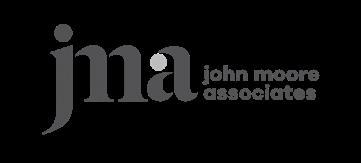
Keleher & McLeod keleher-law.com
New Mexico Arts nmarts.org

RBC Wealth Management rbcwealthmanagement.com

Meredith Foundation
New Mexico Gas Company nmgco.com

Moss Adams mossadams.com

Music Guild of New Mexico musicguildofnewmexico.org

The Verdes Foundation verdesfoundation.org
Sandia Laboratory Federal Credit Union slfcu.org

New Mexico Philharmonic Foundation Inc. nmphilfoundation.org

Olga Kern International Piano Competition olgakerncompetition.org
Scalo Italian Restaurant scaloabq.com

Urban Enhancement Trust Fund cabq.gov/uetf
SUPPORT YOUR NMPHIL Interested in becoming a sponsor of the NMPhil? Call today! (505) 323-4343.

2022/23 Season / Volume 11 / No. 5 26 THANK YOU

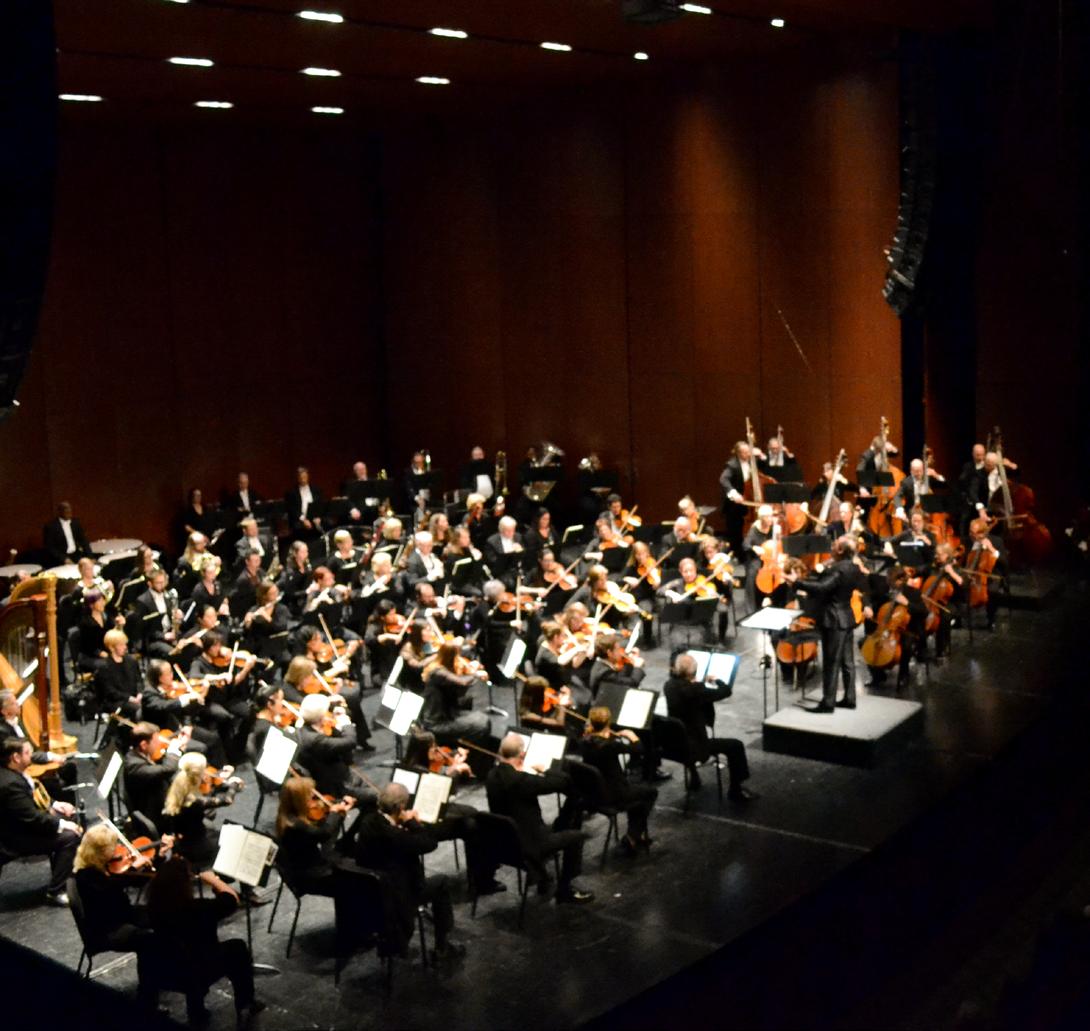



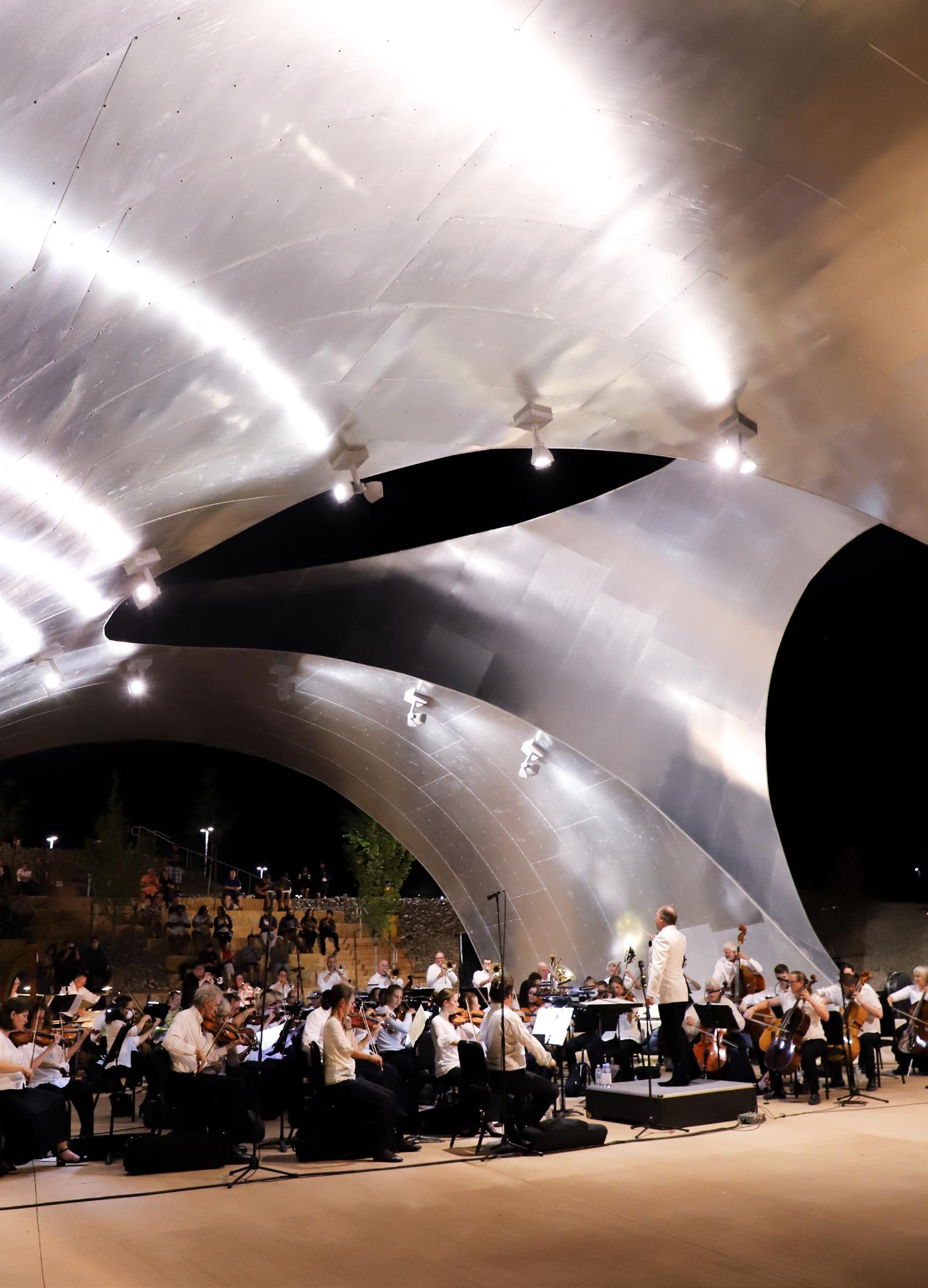 Roberto Minczuk Music Director
Roberto Minczuk Music Director
